Subscribe to get notified about product launches, special offers and news.
Free shipping on orders over $9.99 within the continental US

Login to my account
Enter your e-mail and password:
New customer? Create your account Lost password? Forgot your password
Forgot Password
Enter the email address associated with your account.
Remembered your password? Back to login
Create my account
Please fill in the information below:
Already have an account? Login here
Located in Huntsville/Madison, AL? Request a Business account here
Your cart is empty
How to Nail a PowerPoint Presentation for Job Interview
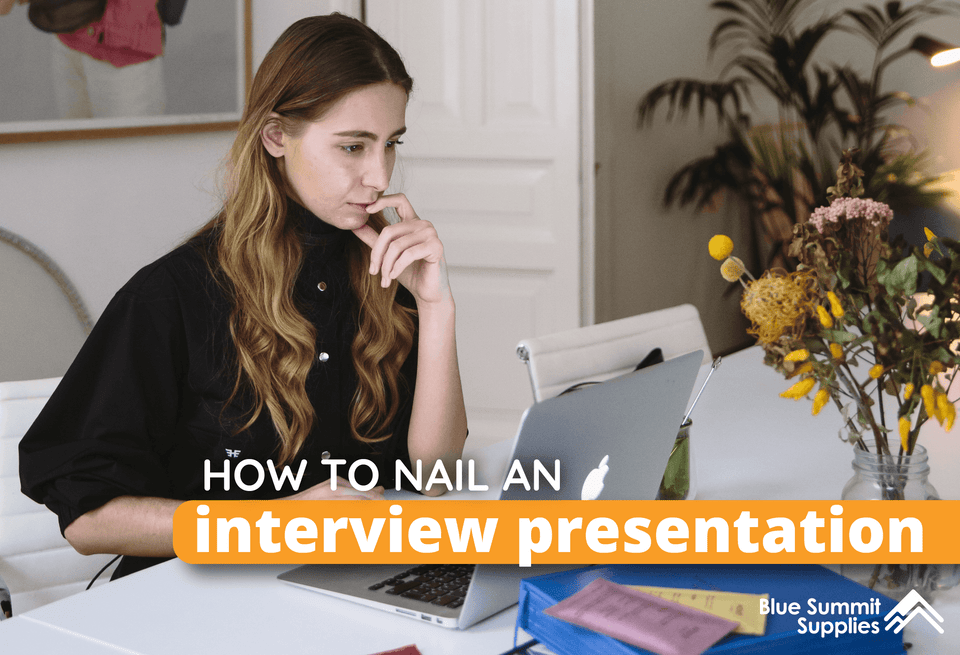
You just scored an interview for you dream job! Yes! But…now they’re asking you to give a PowerPoint presentation for the job interview.
What the heck? Isn’t interviewing nerve-wracking enough without the added stress of giving a presentation?
We hear you. It’s a lot of stress. But actually, when you stop to think about it, what is a job interview if not a presentation about yourself? Now you just have the added benefit of visuals and slides to work with.
In this article, we’ll demystify the interview PowerPoint presentation ordeal and help you put your best foot forward so you can nail the interview!

What is an Interview Presentation?
Ok, back up. What exactly is an interview presentation? According to Indeed , an interview presentation is a “formal presentation delivered to a human resources team, management team, or another group of people to convince them that you are the best candidate for a position.” Potential employers may ask you to make an interview presentation to better assess your public speaking and/or communications skills, your ability to stay calm under pressure, your knowledge about specific, industry related topics, and more.
This kind of presentation can give your potential employers a really comprehensive look at you, so it makes sense. And although you may run into a request for an interview presentation in any industry, this tact is particularly popular in Sales, Marketing, Technology, and Academia.

Benefits of Interview Presentation
Now that you know why employers might make this request, why might an interview presentation be a good thing for you? One of the biggest benefits for you is that it gives you a chance to shine and stand out. Old-fashioned interviews have become somewhat run-of-the-mill, with those ever-recycled questions like “what would you say are your greatest strengths” all running together. But with a unique presentation designed and delivered by you, there’s more of a chance for you to really leave a distinct impression.
Additionally, giving an interview presentation gives you a chance to show your professionalism in a different setting than just a conversation. You can prove your diligence, your attention to detail, and your work ethic just by how you compile the presentation.
How to Make an Interview Presentation
It may seem overwhelming at first, but don’t be intimidated by the task of creating an interview presentation. Below, we’ve compiled a list of interview presentation tips — from initial research to the final presentation — that will have you acing this task in no time.
Making the Presentation

Gather Information

Do your Research
This is a solid tip for any kind of interview: do your research! Make yourself an expert on the company for which you are interviewing. It’s no secret that you are far less appealing as a potential hire if you don’t know anything about the company or industry. But the important thing here is to make sure your gathered knowledge comes across. Prove your expertise in your presentation.

Pick your Platform
Sometimes, your potential employer will have a particular platform that they want you to use for your interview presentation, but more than likely, they will leave it up to you. The basic presentation software out there includes PowerPoint, Keynote, and Google Slides. If you’re going for an artsier, more unique approach, check out Prezi : an online virtual presentation tool with a more animated feel. Go with whatever platform you’re comfortable with, or you can even start by looking at templates and seeing what matches your style.

Start with Structure
Every great presentation, whether for an interview or not, starts with a strong and compelling structure. In simplest terms, you have an opening, details, and then a conclusion. When structuring your presentation, begin with a strong opening that states your goals and introduces yourself. Next, keep the main body of the presentation to around three major points (although you can have plenty of subsections.) Then finish with a killer closing, something to bring it all home. All throughout, keep your message clear and make every piece of your presentation relate back to that message.
Check out this article for more in-depth tips on structuring a great presentation of any kind.
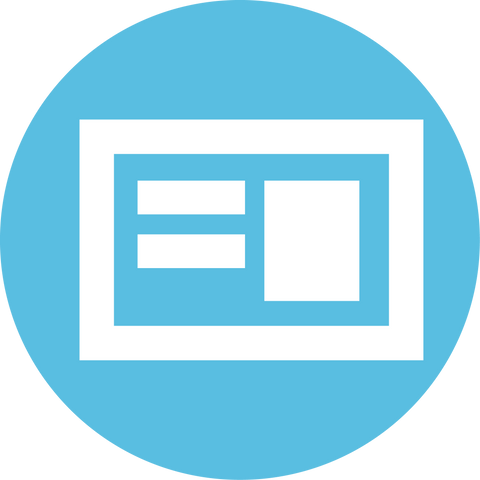
Keep it Clear, Succinct and Impactful
Make sure your content is simple and clear. You want your audience to glance quickly at your slide, gain interest, and then listen to you, the presenter, for more in-depth information. Be careful not to pack too much information onto the slides themselves, or to break off onto tangents that don’t support you. But do be sure to choose eye-catching images for your slides and easy-to-read fonts that really pop.

Highlight YOU
You could almost think of this presentation as a commercial and the product you’re selling is you. While it’s important to demonstrate expertise through your presentation, make sure that everything goes back to selling you as the star of the show.

Practice, Practice, Practice

Giving the Presentation

Build Rapport
The day of the interview is here! Once you begin your presentation, start off by building rapport with your audience. Not only will this help draw them in and make them more engaged in your story, it will also help calm you down. Introduce yourself, smile, and maybe even consider cracking a joke if the mood is right.

As you give your presentation, try your hardest to not read straight off the slides or from your notes. Snooze alert! This will bore your audience and give them the impression that you don’t know what you’re talking about. Be so confident and practice so thoroughly ahead of time that you can speak off the cuff and don’t need to read your notes at all.
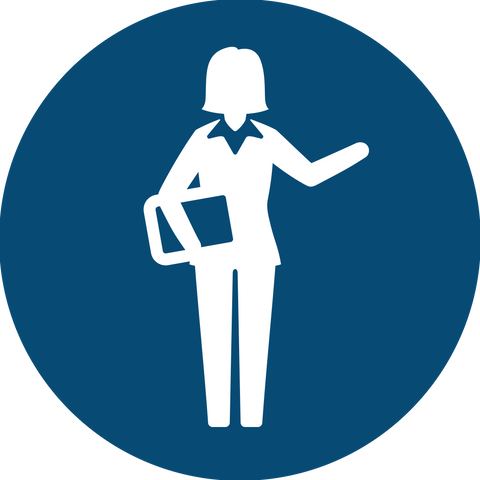
Mind Your Body Language
Sit up straight, shoulders back, and smile! Your body language is always incredibly important for any kind of presentation. You want to appear professional and comfortable at the same time.

Diction and Delivery
Make sure you’re enunciating clearly and projecting to “the back of the room,” even if that’s just your computer’s microphone. If you mumble or speak too quietly, you’ll come across timid. Also, most of us have a tendency to speed up when we’re nervous. Pay attention to the pace of your speech and even build in some pauses if you can. This will give you time to collect your thoughts and let your message sink in for your audience.

Be Confident
You got this! Even if you’re not feeling confident on the inside, show it on the outside. Speak with authority and make eye-contact with your audience by staying focused on your camera. This is you you’re selling after all, and no one is a better authority on you than you!

Take Questions at the End

Presentation for Interview Example
If you’re looking for job interview presentation ideas, check out this great example on Slide Team or this one on Slide Geeks .

Pre-Recorded Video Interviews
On a related note, some potential employers may ask you to make a pre-recorded video interview. This tactic has become increasingly prevalent in the age of COVID and Zoom interviews. Essentially, employers can give you a set of questions ahead of time and you can record yourself answering them, then send it in for them to review on their own time. Sometimes, potential employers will call this a “pre-screening.” While this isn’t technically an interview “presentation” per say, it sort of falls into the same category, so we want you to be prepared.
The best way to record video interviews is with whatever software and setup you’re comfortable with! If you have a great camera-ring light-soundproof room already set up and raring to go, obviously you should use that. But if you don’t have a pro setup, don’t sweat it. Most people don’t. Just record your interview with the webcam on your computer. You can also record an interview directly through Zoom meetings . But do make sure that you are properly lit, somewhere quiet, and that your background is clean and intentional.
Other tips for pre-recorded video interviews:
- Maintain eye contact by focusing on the camera and not the video of yourself.
- Dress professionally , even your pants and shoes that won’t be seen in the video. You’ll be in a better headspace when you’re dressing the part and you avoid the embarrassment of accidentally standing up while only wearing boxers in the video.
- Remember — it’s still an interview! Don’t let the strange format throw you off. You still need to transfer everything you’ve learned about acing interviews, like not fidgeting and sitting up straight – to this pre-recorded format. Check out our article on acing remote interviews to learn more.
So by now, hopefully you feel like an expert on how to nail a presentation for a job interview. Once you understand what is being asked of you and how it benefits all parties, this type of interview makes a lot of sense. If you follow the guidelines above, you’ll be able to make a stellar presentation. And remember, your audience wouldn’t have invited you to interview if they didn’t see something in you. They want you to succeed! So take a deep breath and give a presentation that’ll knock their socks off!
Do you love office talk as much as we do? Follow our office supplies blog for the latest office trends, team building strategies, product comparisons, and more.
If you have any questions or want to talk to someone about office supplies, send us an email or connect with us on Twitter , Facebook , or Instagram .
For more informative articles about office supplies, subscribe to our email newsletter!
Never fear, you won't begin receiving daily sales emails that belong in a spam folder. Instead, we promise a fun weekly roundup of our latest blog posts and great finds from across the web. And if you lose interest, it's always easy to unsubscribe with a single click.

ABOUT THE AUTHOR
When Olivia West isn't writing theme park attractions for Universal and Disney, she's writing any other thing she can get her hands on! She loves writing novels, scripts, blog posts, bad jokes, and everything else. If you can't find her at her laptop, however, she might be chilling in the nearest speakeasy sipping a manhattan or screaming her head off on the nearest roller coaster. Check her out at oliviawestwriting.com !
Leave a comment
All comments are moderated before being published

Popular posts

Featured products
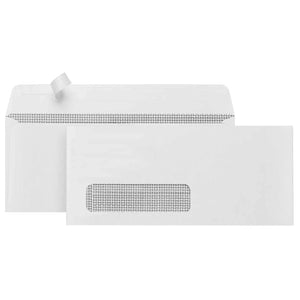
Free shipping for most
On orders $10 or more within the continental US
Customer Service
Check our FAQs or send us a message
Send us a message
We are available Monday through Friday, 8am - 5pm CST
Safe & secure payments
Our store is PCI compliant to keep your info safe
- Opens in a new window.
- Google Slides Presentation Design
- Pitch Deck Design
- Powerpoint Redesign
- Other Design Services

- Guide & How to's
How to create and give a great presentation at a job interview?
A job interview presentation can be your own initiative or the company’s requirement for meeting with HR or a recruiter. In both cases, it is your chance to demonstrate your mind, approach, and skills from your vacancy perspective. Additionally, a quality and attractive interview PowerPoint presentation shows your ability to analyze, talk, explain, and persuade. If you’re a designer, you should make a pitch on colors, fonts, and other visual components. If you are a sales manager, you should concentrate on numbers and better send a presentation design to the agency.
If you feel you can rely on yourself, we’d like to share some tips on how to make a presentation for an interview and present it confidently.

Slides to Include in an Interview Presentation PPT
The zero advice here is to include only the most relevant details and facts of your biography. If you apply for a manager position, mentioning psychology as a hobby will add points. However, if you apply for a programmer, there is no need to show your rewards in ballet or box.
To begin with, aim for one slide per minute. If given 10 minutes, try to contain 10 to 12 slides. Let’s outline some basic slides in your presentation for the interview ppt.
All these slides cover a simple 3-stage presentation structure:
- Introduction: tell them what you’re going to tell them.
- Middle: tell them.
- End: tell them what you told them.
Slide 1: Welcome the audience.
Welcome people to your presentation by introducing them, saying what you will cover, assuring their comfort as observers, and asking them to leave all questions until the end.
Slides 2-3: About me (education, past jobs, courses, skills).
Slides 4-5: What I can do for you (the reason to apply, strengths, previous achievements).
Slides 6-7: Why I can do it (skills, solutions).
Slide 8: Summary.
Some positions allow including slides about hobbies or some interest outside the work, but we suppose that depends on the seniority of your position and its type. If those interests strengthen your skills required, add them but briefly.
Tips to Improve Your Presentation for Interview
Research the company.
The first interview presentation tip is to personalize slides for the company’s industry and their latest challenges/news/issues. What kind of products and services do they sell? You adjust your expertise to the company’s current problems showing how your skills impact and contribute as soon as they hire you. However, we advise not adding these references to every slide because it may look obsessive.
Know yourself
The second tip to ace your interview presentation slides is to know your strengths. You can list dozens of certifications, but how do they really work and help in practice? Name advantages related to the company. Tell the audience what you have done and can do to assist the company in current challenges. For example, you’ve researched the company’s goals to achieve, and you should focus on those strengths that complement these aims.
Present with PCS format
PSC is an abbreviation meaning Problem, Consequences, and Solution. For example, you start the presentation by identifying a company’s problem, continue with the consequences they face without your expertise, and end with the clear solution you propose to overcome the problem. The solution shouldn’t be perfect, but this approach shows you’re a creative problem-solver.

6 C’s to Consider to Give Top-Notch PowerPoint Presentation for Job Interview
Psychologically, you need to do a couple of preliminary things to recognize what interviewers are looking for in the first place. Let’s review what they specifically search:
1. Communication
They will look at how you communicate, articulate, or are cohesive and smooth. Not only slides but words coming out of your mouth must make sense.
2. Carry yourself
They will notice whether you’re enthusiastic, energetic, polished, professional, persuasive, etc. For example, if you apply for a senior position, the interviewer will definitely consider if you can give confident pitches or arguments.
Are you comfortable with this entire environment? Is it easy for you to be present? People who interview dozens of candidates easily read your comfort or discomfort level by analyzing body gestures: how you click the clicker, look at the slides, bite lips, change voice tone, react at the interruption, etc.
4. Construction of presentation
It is more than just an outline structure, and it is about whether the person is going through a cohesive story with all the necessary information and prepared slides. It is about the packaging you must put together from PowerPoint or Google slides , a deck, handouts, etc.
It is the biggest key of the whole meeting. Sure, presentations are about introducing yourself, but the insight, information, and sequencing will cover the most time.
6. Compelling
You’ll often need to make a persuasive argument for the audience to see it as a good “deal” and you as a profitable “offer” they want to buy. Don’t consider it offensive but aren’t you selling your expertise and time, right?
To get the offer, you need to know what they want to give something valuable. People make mistakes when they think about their personalities while creating slides. The right approach is to consider the company’s needs when compiling skills, adding certifications, and listing advantages. Don’t waste anyone’s time 🙂
If you consider our tips, you know now how to give a good interview presentation. It is all about focusing on the company’s current needs or challenges. If you use this perspective, you’ll look like a more valuable candidate interested in the vacancy and able to propose solutions to real problems and ways to achieve current goals. Companies will never kick off individuals who know their strengths, communicate confidently, and show sincere interest in the company.
#ezw_tco-2 .ez-toc-widget-container ul.ez-toc-list li.active::before { background-color: #ededed; } Table of contents
- Presenting techniques
- 50 tips on how to improve PowerPoint presentations in 2022-2023 [Updated]
- Keynote VS PowerPoint
- Types of presentations
- Present financial information visually in PowerPoint to drive results

How to write a resume presentation: tips and tricks from experts

- Design Tips
How to make a presentation interactive

Inspiration for PPT: how to find design ideas

- Read our new Policy Terms now here.
- The Secret to Crushing Your Job Interview Presentation
- Home
- Blog
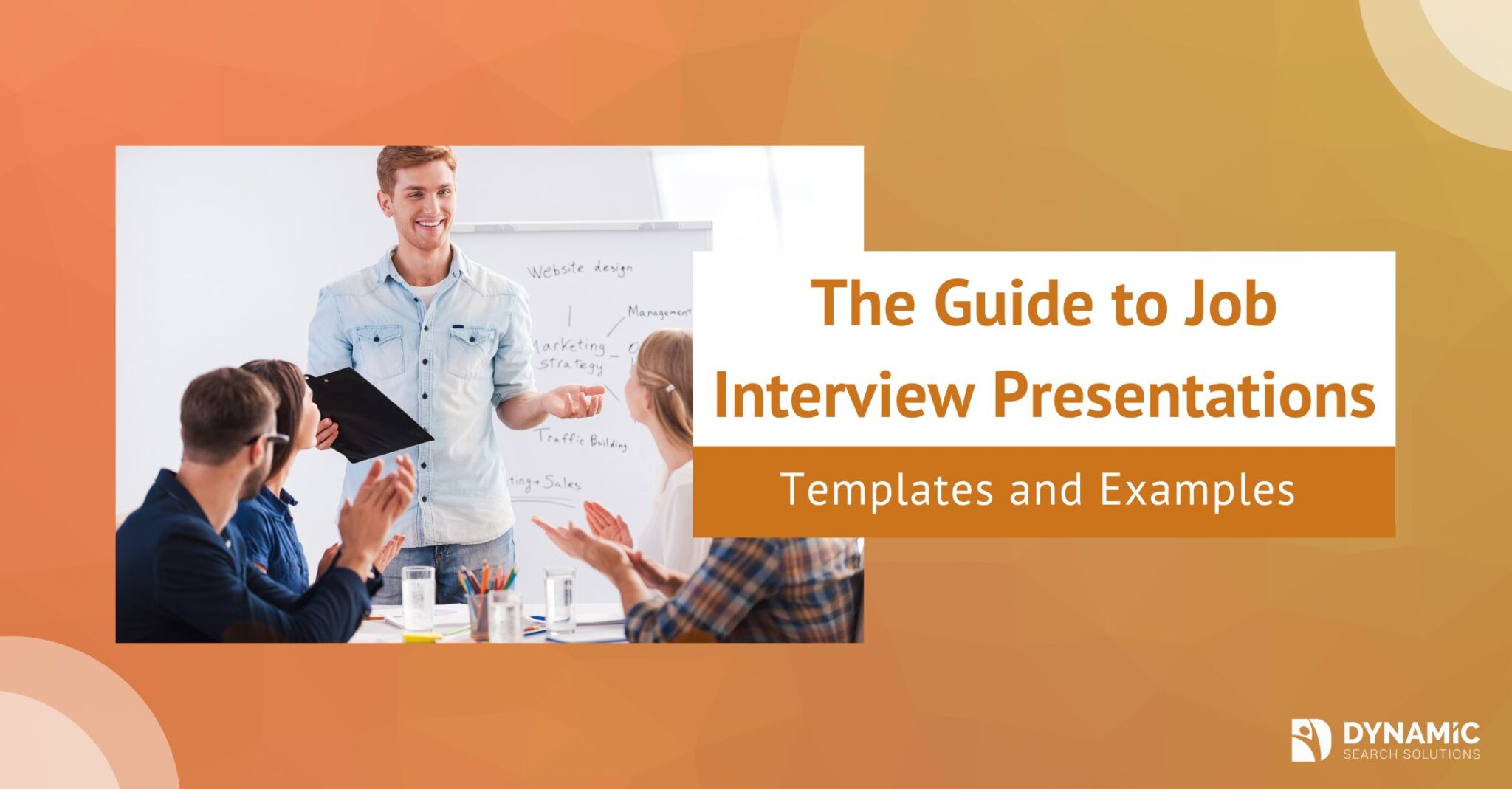
- Career Tips
- 27th October 2023
During your job search and as a part of your interview process, it’s not uncommon to have to give an interview presentation.
Here at Dynamic, the professionals we help with their job search regularly give interview presentations. And we offer support throughout this process: From helping them to understand what the interviewer is looking for from the presentation, to actually helping with the content of their presentations.
We’re here to help you answer the questions you’ve been wondering like: What exactly is an interview presentation? What should you include? And what to do when your interview presentation doesn’t quite go as planned.
What is an Interview Presentation?
At any stage in your career you may be asked to give an interview presentation. This interview will likely test you on one or more of the skills that are most important to the role.
The interview presentation you are asked to give can vary largely, depending on the role you are applying for and the industry you work in.
For example, a Solutions Architect may have to give an interview presentation that shows their technical ability, but also highlighting communication and presentation skills.
Meanwhile someone earlier in their career at a Network Engineer level, will likely have to give a presentation that focuses purely on their technical ability: Because that is what is most important to the employer when hiring at this level.
But the core approach and things to remember about giving an interview presentation
Why Are You Being Asked to Give an Interview Presentation?
When an employer asks you to give a presentation in your interview, it is typically to gain a greater understanding of your skills or experience. These will be the skills or experience that are most important to the role, and can offer you insight into what will be expected of you in the role.
The questions you are asked in an interview are obviously important, and it’s always a good idea to research the typical interview questions that you are likely to face .
But the interview presentation can be just as, and is likely more important than, the questions you answer: And is typically where many potential candidates are rejected from the interview process.
The interview presentation will also help you to understand whether the job is one that would be right for you. The presentation task will likely be something you will be doing in the role everyday, or something that is of crucial importance. So the interview presentation task can give you more insight into the role than you can get from asking questions in the interview.
The 5 Things Your Job Interview Presentation Needs to Show
Before we get into the practical tips for your interview presentation, there are a few essential things that your presentation must show:
1. That you understood the task and the job you’ll be doing.
All too often we see candidates who have rushed into an interview task, without really taking the time to understand the task or understand what the employer was really looking to see.
Because it’s feedback we hear from the employers we work with all the time. It’s crucial to make sure you understand what the employer wants to see from your task.
2. Your technical experience and expertise.
Pretty obvious, but pretty important. If you’re given a technical task, you need to show that you’re an expert at what you’ve been asked. This can mean going back and doing some revision around this area, to refresh your memory and prepare yourself for any questions you might face.
3. That you can handle yourself in a high-pressure situation.
Being cool under pressure is an essential skill and is an attractive quality in almost every job. Conversely, while someone may be great on paper, if they can’t articulate themselves or crumble under pressure, that can be a huge red flag to employers.
4. You can communicate well with clients and colleagues.
Communication is key, especially in a position where you’ll be working closely with clients or colleagues. And if you can’t articulate yourself effectively in a presentation setting, employers will be hesitant to put you in a role where you will be presenting to clients.
5. That you really want the job.
If you’re in the interview, then it’s fairly obvious that you want the job you’re interviewing for. But one of the things that employers will look for is who really wants the job.
Putting in the effort, preparing for any questions they may have and rehearsing your presentation, will show the interviewer that you’re serious about the opportunity.
13 Interview Presentation Tips and Steps to Success
These 13 tips will outline the steps you need to take when creating, presenting and what you need to do after your interview presentation.
1. Understand your audience and what they are looking for
The most important tip we can give is to understand what your audience, the interviewer, is looking for from your presentation.
If you’re interviewing for an IT Account Manager position and asked to give a mock pitch to clients, is it the contents of your presentation that really matters? Probably not.
Instead, the interviewers are looking to see that you present yourself well, can communicate effectively, and have a technical understanding of what you’re selling.
2. Keep it nice and short
Nobody wants to sit through a seemingly endless presentation. So try to keep the presentation you give nice and short: As concise as it needs to be.
If you’re really not sure about the length of the presentation, you can always ask the interviewer about how long they would like the interview presentation to be.
If you haven’t been given an outline for how long your presentation should take, you might be tempted to put in as much useful information as you can, to show off your knowledge and skills. But we advise having only the necessary information you need to complete the task at hand or answer the questions that you need to.
3. Have a structure for your presentation
Imperative to having a streamlined and professional interview presentation, is having a solid structure. Whatever the subject of your presentation, you should have an introduction, the main points you want to address, and a conclusion.
4. Use images and graphs, not just text
Make your presentation more engaging by including images, graphs, diagrams and maybe even a video if you’re feeling a bit creative.
This prevents your presentation from becoming monotonous, and can help to break up slides of text after text or large sets of data.
5. Don’t try to fit too much information on each slide
It can be tempting to try and use up all the real estate on your presentation slides, cramming them with information.
But we advise having slides with just the key points that you want to explore, or a graph that will support what you say.
Keeping the majority of the information off the slides gives you more to talk about, stops everyone from sitting and reading the slides in silence, and will keep the interviewers attention on you.
6. Try to match the branding of the business
Something we advise that doesn’t take too much effort, is mirroring the branding of the business you’re applying for a role at.
What we mean by this, is to say you’re applying for a job at BT. Going on the BT website and downloading some pamphlet or e-book from their website and matching the logos and overall colour scheme that they use.
It’s not the most important thing in the world, as it won’t save your interview presentation if everything else goes wrong. But it does show you’re putting in the extra effort to impress the interviewer.
7. Double check for any mistakes
And in opposition to this, is making sure that there are no mistakes in your presentation. Because having simple errors or spelling mistakes in your presentation isn’t a great look, and the interviewer will be sure to notice.
So make sure to proofread your presentation. And even better, have someone else double check it for you.
8. Practise presenting to yourself, or to friends/ family
The difference between someone presenting for the first time and someone who has rehearsed is absolutely noticeable to a hiring manager. So we strongly advise taking the time to practise your interview presentation beforehand.
Not only will this help you appear more natural when you present, it will also help you to know if your presentation is too long and needs to be cut down.
9. Be confident when presenting
Not everyone is a natural born public speaker. But exuding confidence in your presentation is essential. Which means:
- Taking your time and not rushing through your presentation.
- Speaking confidently and clearly.
- Asking whether you’ve been clear with what you’ve said so far.
- Even your body language.
Because if you struggle to present confidently and can’t articulate yourself properly, then the employer won’t be confident that you will be confident in front of customers or clients.
10. Be confident with your body language
When you present, the interviewer will be aware of your body language and what it says about you: So it’s important that you are aware of it too, and you’re in control of it. This can involve making eye contact, using appropriate and positive hand gestures, having a good posture, and smiling.
These are just a few tips, but for more information on how to convey confidence with body language throughout the interview, read our guide on interview body language here .
11. Don’t go overboard on time, and leave time for questions
We’ve mentioned the length of your presentation earlier, but it’s important that you don’t go over the assigned time limit.
It shows poor time management, poor communication skills (if you take too long to get to the point), and an employer would likely be more hesitant to put you in front of customers or clients.
You should also aim to leave about 5 minutes of time at the end of your presentation to give the interviewers the opportunity to ask any questions, without going overboard on time.
12. Think what questions you need to expect
Predicting the questions you’re going to face seems like an impossible task. After all, you could be asked about pretty much anything. But in reality, understanding the task and what the interviewer is looking for will help you to have an idea of the kinds of questions you’ll be asked.
For example, if you’re giving an interview presentation that is a mock pitch to clients, then you can attempt to think of some objections that a client would raise about your pitch. Or if you were listening to your presentation, what are the questions you would ask?
13. Thank them for their time, and reiterate your interest in the position
When you’ve finished your presentation and interview, remember to thank the interviewer for their time and say again how interested you are in the position and in joining the company.
When an interviewer is trying to make a decision between a few competitive candidates, being the one who is eager and actively wants the job can be a deciding factor.
What to Do If Your Interview Presentation Doesn’t Go to Plan?
Hopefully your interview presentation goes perfectly and you can skip this section completely. But just in case it doesn’t, here are a few things that could go wrong in your presentation and how to avoid them.
Technical difficulties
Technical difficulties can be frustrating at the best of times but especially in a high-pressure situation like an interview. And even worse, they can be completely out of your control.
The best thing you can do is to prepare for any eventuality.
Email a copy of your presentation to yourself. Have another copy on a USB memory stick that you bring with you. Print out a few copies to hand out as a backup. Try to cover all bases where possible.
You are asked a question you don’t know the answer to
While you can try to predict the questions you’ll be asked, it’s unlikely you’ll get them all. And you may even be asked a question to which you simply don’t have the answer.
So instead of trying to come up with an answer on the spot, it’s best to pause and ask for a minute to consider. Or if you’re truly stumped, be upfront and say you don’t have an answer at that time but will revisit at the end of the interview, or at a later date.
While it would be an ideal situation to have an answer to every question, asking for time to revisit shows confidence and self-awareness.
Your audience seem disinterested or not engaged
Interview presentations are necessarily the most exciting things in the world. Especially if an interviewer has conducted multiple of the same interview.
So don’t be disheartened if the interviewers don’t seem the most engaged. And if they do, you can always ask the interviewers if everything you have said makes sense so far or if they have any questions about anything you’ve discussed up to that point.
This also helps to stop your interview presentation turning into a lecture and gives yourself a pause to collect your thoughts and take a break.
You’re going overboard on time
Before you go in, you should have a good idea of how long your presentation will last. Even so, you can find yourself going overboard on time when in the interview.
It’s important to be aware of how much time you have left and if you’re going to go overboard on time.
But you can prepare for this beforehand. Before you go into the interview, try to think of areas that you can trim or cut from your presentation just in case. That you would like to include if you have the time, but aren’t 100% necessary to keep in, or that you can summarise quickly if you need to.
5 Ways How Working With a Recruitment Agency Can Help Your Interview Presentation
Interview presentations can be incredibly stressful, and the whole interview process is hardly a barrel of laughs. But working with a recruitment agency can be helpful for a number of reasons:
- Recruiters often have insight into exactly what the interviewer is looking for, giving you an edge over the competition.
- Recruiters have seen hundreds of interview tasks and presentations, and can give you individually tailored advice.
- It gives you someone to rehearse with, or give you feedback on your presentation.
- And the recruiter may also know where previous candidates for the job have gone wrong in their presentations, telling you how to avoid these mistakes.
- All of which can give you a big confidence boost, knowing that you have a recruitment professional in your corner to support you
Support with your job interview presentation is just one of the many benefits of working with a recruitment partner. Have a look at our open IT jobs here , or reach out to register your interest here .
Leave a Reply Cancel reply
Login to your account, register account, register for new job alert.
UPLOAD YOUR DETAILS
Send your details by LinkedIn
By using this form you agree with the storage and handling of your data by this website. For more information on our privacy statement please click on Privacy Preferences .
Contact Number
Type of role looking for
Attach your CV (pdf, doc, docx)
Submit A Vacancy
Company Name
Jobs you need to hire for?
Digital Marketing News
Job interview presentations: how to crush your next job interview presentation.

The Job interview presentation is a typical, but difficult part of the interview process. The presentation you have to give can differ massively to someone who is applying to a different role. For example, for a junior SEO or content writing position, you may have to do a written task beforehand, and then present on it.
But in a PPC or Paid ads position, you may be asked to conduct some data analysis and report on your findings and what your actionable outputs would be.
But despite this variety, there are a few universal rules for your job interview presentation that you should be aware of: From the key things to remember during a presentation, to common mistakes to avoid.
What is a Job interview Presentation?
A job interview presentation is a task, set by the interviewer, to assess your knowledge of a certain skill or skills, usually one that is incredibly important to the position you’re applying for.
While job interviews primarily consist of interview questions (and you definitely should prepare for the typical digital marketing interview questions you’re likely to face), you are likely to have to complete a job interview presentation as well.
These interview presentations can range from technical tasks and presenting your results and how you found the task, to giving a mock pitch or presentation for a client, or even presenting about yourself and why you are a great fit for the job.
And while there are a wide variety of job interview presentations you can be asked to give, your approach should stay the same.
Why Are They Asking You to Do a Presentation in Your Job Interview?
Employers primarily use a job interview presentation to gain a deeper understanding of your skills or experience: An area that will be crucial in your new role.
An interview presentation or task gives an interviewer a stronger sense of your ability than traditional interview questions. Which is why it’s essential to get it right.
But getting it right, depends on the role you’re applying for. So it’s important to identify which skills the task is asking you to show.
For example, if you’re going into a data heavy role, then a business will be eager to see how well you can work with large datasets and Microsoft Excel. Or in a client-facing, account management role, you’ll need to show you’re confident presenting and in high-pressure situations.
Recognising what the interviewer is looking for lets you know where to focus your efforts for your presentation.
Key Things to Remember for a Job Interview Presentation
When completing your job interview presentation, there are a few key things that the interviewers will be looking for from your presentation that you need to remember:
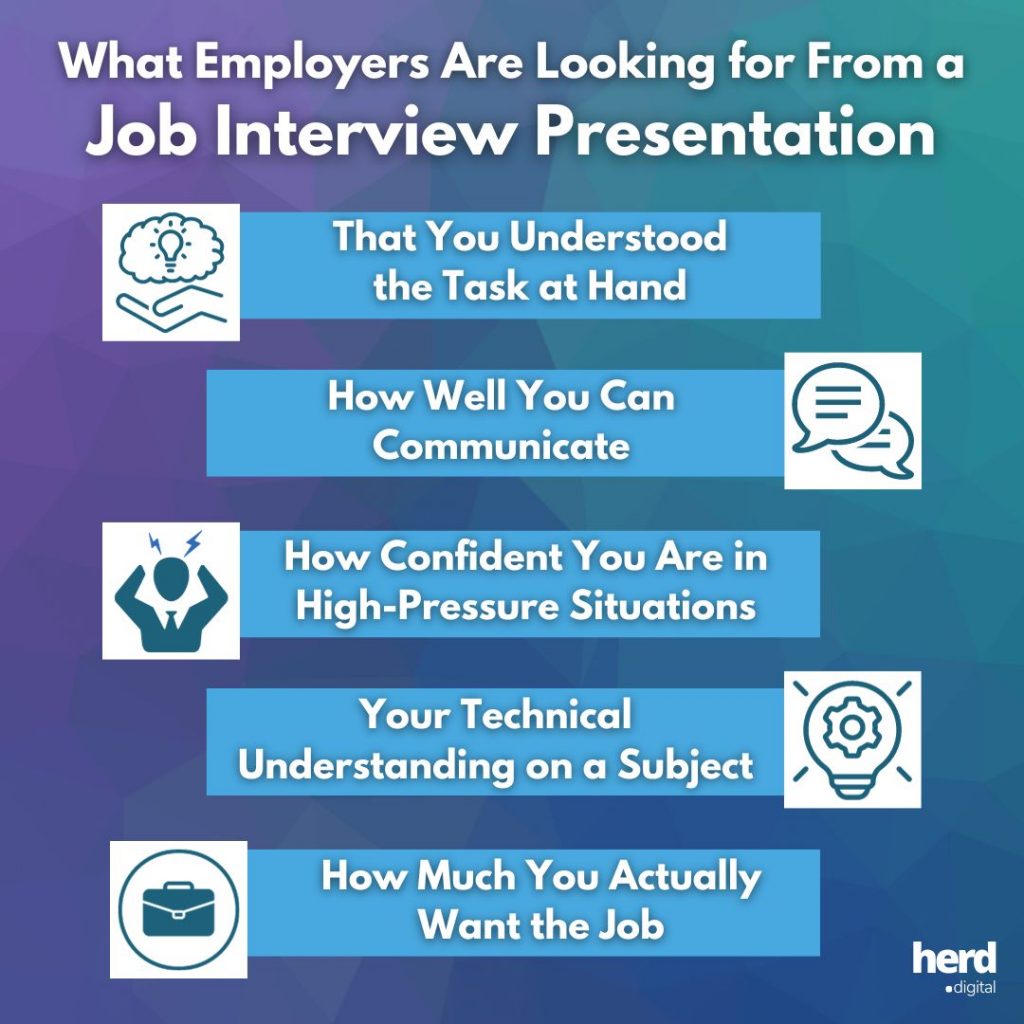
These are the biggest points to remember during your interview presentation, but they’re not the only ones. You can always be up front with the interviewer or hiring manager you have been working with and ask them what they want to see from the interview.
11 Job Interview Presentation Tips
1. keep it to a good length.
Something to ask yourself is, how long should your interview presentation be? Unfortunately, the answer is “it depends”. A presentation should be as long as it needs to be, to concisely and clearly convey the subject matter.
Many interviewers often give an outline of how long your interview presentation should take. And you can always ask the interviewer how long they would like the presentation to be: After all, they will have had multiple people complete this presentation for them before, and should know roughly how long it should take.
2. Make it visual
Your interview presentation should engage the interviewer, but without boring them.So you should aim to make it visually appealing: Which means more than just slides filled with text after text.
Instead of having fields of data, use graphs, diagrams and charts to make these more digestible and visually interactive.
3. Don’t overcrowd the slides with information
We generally advise only having one idea or point per slide. You want your presentation to be easily digestible, without bombarding your interviewer with too much information at once.
After all, you should use the slides to highlight the most important parts of your presentation, and then go into more detail and expand on them yourself.
4. Use the company’s branding
A small touch for your job interview presentation to impress the interviewer, is to match the branding of the company you’re looking to join.
This simply entails looking at the company website, perhaps even downloading some of their downloadable assets, and copying their brand feel and style.
While not a make or break for your presentation, it does show that you’re putting in the extra effort, and recognise how important the company brand is.
5. Proofread
When you’re finished with putting together your presentation, it’s time to double and triple-check it. Because there’s nothing more embarrassing than going to present and noticing a spelling mistake that throws you off your game. Or even worse, having it pointed out by the interviewer.
6. Make sure to practise beforehand
Whether you practise on your own or with others, it’s crucial that you practise your presentation beforehand. This allows you to:
- Make sure your presentation flows smoothly from slide to slide and point to point.
- Ensure you have fully memorised the content of the presentation.
- And that your presentation is an appropriate length, not too short or going on for too long.
And if you’re not a natural presenter, rehearsing and ensuring that you’re as practised as you can be is a great way to increase your confidence.
7. Present confidently and clearly
Just as important as the content of your presentation, is how you present it. Your job interview presentation could be full of information and be beautifully written and presented. But if you can’t present with confidence and clarity, the interviewer isn’t going to have much faith in your ability to work cohesively with others.
This is especially important in roles where you’ll be working with customers/ clients, or have to regularly collaborate within other teams within the business.
8. Don’t rush it
When in a high-pressure situation, it’s understandable that you want to get through the presentation as quickly as possible. But your interviewer will absolutely pick up on if you’re rushing through the presentation and your nerves.
But it’s important to slow down and not rush through it. This allows you to take control of the presentation, and deliver it confidently and clearly.
9. Have relaxed and confident body language
Your body language tells your interviewer a lot more about how you’re feeling than you realise. So aim to have open body language, animated but not erratic.
Meanwhile try to avoid having arms crossed, with conveys being uncomfortable in the situation. Or having a lack of eye contact, that can convey that you’re not confident with what you’re saying. And if your body language is saying that you aren’t confident with what you’re saying, why should the interviewer believe you!
For more information on what your body language says about you, and tips to improve your body language in interviews, have a look at our full guide here .
10. Leave some time at the end of your interview for questions
For example, if you’re given 30 minutes for your presentation, we would advise aiming for around the 25 minute mark, allowing 5 minutes for any questions.
This gives you ample time to answer any interviewer questions, and gives you the time to respond to challenging questions without feeling rushed, knowing you have the time to think of an answer.
11. Understand what the interviewer is looking to see, and prepare for any questions you might face
While it can be tricky, it’s important to put yourself in the shoes of the hiring manager and interviewer. Try to understand what exact skills they’re looking for from your presentation.
Understanding this will have a huge impact on your presentation and its contents.
Additionally, understanding the areas of importance to your interviewer helps you to predict and prepare for potential questions you’re likely to face.
While you won’t be able to predict every question, you can prepare answers that can be adapted and used to answer a variety of questions.
For example, say you’re interviewing for a client facing role where your presentation is creating a pitch for new customers. A good idea would be to prepare answers for any potential objections the imaginary client may have to your pitch.
5 Mistakes to Avoid in a Job Interview Presentation
Just as important as it is to know what to do in your presentation, it’s important to know what not to do. Because these common interview presentation mistakes can cost you if you don’t prepare!
1. Being Nervous With Presenting
This one is certainly easier said than done. But it is possibly the most important thing to avoid in your job interview presentation. A little nervousness is absolutely normal. But being overly anxious can stop you putting your best foot forward.
A presentation is all about projecting confidence, in both yourself and the subject you’re speaking about.
And if you’re not a natural public speaker, (and even if you are) the best bit of advice we can give you is to practise your presentation until it feels natural. The more you practise, the better you’ll know what you’re presenting, and the more confident you will feel.
It can sometimes even be helpful to go over your presentation with a colleague or someone who can give some friendly advice.
Of course, this is one of the perks of working with a recruitment agency, as we have seen hundreds of job interview presentations and tasks, and give you tailored advice on what the client is looking for…
2. Not Understanding the Task
When the interviewer gives you your task, it’s obviously important to understand what the presentation is asking you to do. But as we discussed earlier, you are asked to complete a job interview presentation for a specific reason.
Understanding the reason behind this allows you to focus your time and efforts into what really matters, and put your best foot forward in the interview.
3. Having Too Much Information on the Slides
A common mistake we see from the candidates we work with is having too much information on your slides. Which sounds contradictory, after all, you want as much information in your presentation as possible, right?
Well yes and no. After all, you want your presentation to be chock-full of relevant information.
But you should aim to use the slides of your presentation as talking points that allow you to present information. The slides should have examples, key figures, or data on, that allows you to expand on them in your own words. Because you want the attention to be on you, not just on the slides.
After all, nobody wants to sit through a half hour presentation of you reading out all the information that’s already on the slides in front of them.
4. Not Being Prepared For Potential Questions
Part of preparing your interview presentation, is predicting the potential questions you may face.
This may require some introspection: Thinking which areas of the presentation are most important, and which areas the interviewer is likely to focus on.
Realistically, you can’t think of every possible question that you can be asked. But, even the act of preparing answers to potential questions will make you more confident going into the interview, and help you to rehearse everything you need to present.
5. Going Overboard on Time and Content
One of the key things to remember for your job interview presentation is the need to follow the established time limit.
While you may have a lot to say on the subject, your interviewers will be keenly paying attention to how well you manage your time in a presentation.
If you’re in a client-facing role for example, the business won’t want to put you in front of clients when you go over the 30 minute allotted time by 10 minutes…
Or Work With a Recruiter Who Will Help With Your Job Interview Presentation !
Of course, it’s always helpful to have someone who can help you with the presentation in your job interview.
One of the perks of working with a recruitment agency like us here at Herd, is that we support the digital marketers and candidates we work with on their interview presentations. While we’re not SEO or PPC experts, we have seen hundreds of interview presentations, and can offer insight into what interviewers are hoping to see.
If you want some support with your job search, (just like with preparing for your job interview presentation), you can reach out to us here to see what we can do to support you in your job search.

Got a question?
We're here to help. Check out our FAQs, send us an email or call us on 0208 629 6006.
Register for new job alert
How To Give a Successful Presentation During an Interview
Learn how to prepare for and ace a job interview presentation
PeopleImages / iStock / Getty Images Plus
- Job Interviews
- Skills & Keywords
- Salary & Benefits
- Letters & Emails
- Job Listings
- Cover Letters
- Career Advice
- Work-From-Home Jobs
- Internships
Why Employers Request Presentations
What interviewers will be evaluating, how to prepare for an interview presentation, tips for a successful presentation, how to ace a video interview presentation.
Madeleine Burry writes about careers and job searching. She covers topics around career changes, job searching, and returning from maternity leave.
For certain roles at some companies, the interview process may require that candidates give a presentation. Even confident speakers can feel some nerves about presenting in an interview setting. It can be a challenge to showcase your ability in front of a prospective employer, regardless of how much experience you have.
The keys to giving strong, effective presentations that wow interviewers are planning and practice.
Review advice on when employers request presentations from candidates for employment, tips for preparing for in-person and video presentations, and advice on how to ace your presentation during a job interview.
Interviewers are most interested in seeing you present if presentation skills are a key part of the role.
“The goal of having candidates present in interviews is to make sure whoever is hired can speak eloquently,” Melissa Hirsch wrote in an email to The Balance. Hirsch is the principal recruiter at Betts, a nationwide technology and recruiting services firm.
Presentations are most often requested of candidates seeking roles in sales or leadership, according to Leslie Schmidt, vice president of recruiting at Betts, via an email to The Balance.
Depending on the role, other factors may be at play. For sales roles, for instance, it’s typical to ask candidates to present on the company’s product.
“When a company asks a candidate to demo their current product, they are listening to their communication style, sales process, how well they qualify and close, and overall selling strategy,” Schmidt said.
Interviewers may also be looking for how well you understand the company’s product and the common pain points for customers.
If you’re applying for a leadership role, you may be asked to share your plans for your first three months on the job, Schmidt said. If that’s the case, be specific. Talk about exactly what you would do, and how.
Giving a presentation on top of a job interview may feel overwhelming. It may help to remember that, in a way, the job interview itself is also a presentation.
“You are presenting yourself as the product to be ‘sold’ to the hiring manager,” Tom Cobin wrote in an email to The Balance. Cobin is the founder of DynamiCoach, which offers coaching and workshops to improve public speaking and presentation skills.
Follow these strategies to prepare for and ace an interview presentation.
During presentations, interviewers will be keeping an eye on your communication skills and organizational skills.
Communication Skills
Interviewers will want to see if you are well-spoken and can share information clearly.
“Depending on the job you're applying for, they may be interested in analyzing whether or not you communicate in a way that will connect with the appropriate level of individuals (for example, senior leadership),” said Lisa Nichols, career and leadership consultant and CEO of Love Your Niche, LLC, in an email interview with The Balance.
Organizational Skills
They’re also looking to see how you organize and share information. Interviewers will be looking for a well-organized presentation and assessing how you use visuals and handouts and get participants involved.
As with thinking through answers to common interview questions, a bit of preparation will help you feel at ease during a presentation. Try these strategies below.
Confirm What’s Expected
Before you fire up your PowerPoint, make sure you have a good sense of what the hiring manager is looking to see.
“Most companies are more than happy to provide extra information and answer questions about the presentation prior to your interview, but make sure you can’t find the answer yourself first,” Schmidt said.
Before you begin preparing, you should have a sense of the following presentation details:
- Audience (e.g., whether the presentation is geared toward C-suite executives, clients, or another group)
Keep It Short
You’ll want to adhere to any time guidelines set by the hiring manager. As a general rule, if the timeline is uncertain, keep it short. And remember to leave time for questions at the end.
“If an interviewer says you’ll be given 20 minutes to present with extra time for Q&A at the end, then your presentation shouldn’t be 10 minutes or 30,” Schmidt said.
In terms of slides, 10 is a good maximum, with an intro slide, agenda slide, and a final slide with the next steps or Q&A.
Go ahead and share your slides with peers for feedback, too.
“The more eyes and feedback you can get, the better” Hirsch said.
Don’t Procrastinate
If you’re pulling an all-nighter to get it done, that might show. Spend sufficient time, and focus on the project.
“Hiring managers can tell when there was a lack of effort and time put into a presentation,” Schmidt said.
Keep in mind that multiple candidates may be presenting on the same topic, making it easy for hiring managers to compare your work to others. Investing time in your presentation will help you make the best impression.
Practice, Practice, Practice
Once you’ve planned your presentation and perfected your slides, you’ll want to practice. The goal is to be very familiar with the material—without memorizing it, according to Cobin. That way, you won’t stumble if you forget something, but your delivery will still be natural: Memorizing can lead to a stiff, stilted presentation. To get comfortable, try rehearsing in front of a mirror or recording yourself.
Take a look at some additional tips for giving a strong interview presentation.
Make Slides Attractive
Your slides should look good. Here are some tips for creating effective supporting visuals:
- Don’t use too much text : Aim for a few bullet points. “The goal is to engage your audience and make it interactive," Hirsch said. "Nobody wants to be talked at for 30 minutes, and nobody wants to read a 10-paragraph essay that's a size 6 font either."
- Don’t read your slides : Instead of reading slides out loud, you should use them as backup, including data, tips, and charts or summarizing your points, Nichols said. Consider printing out copies of your presentation for the interviewers, as well.
- Add color and logos : But don’t overdo it. Your slides shouldn't look busy or distracting.
- Add your contact information : This will help with follow-ups.
- Check for errors—then check again : A typo on a big projector screen is particularly embarrassing. Review for accuracy, spelling, and grammar. Consider having someone else proofread, too.
Visual materials should support—not detract or distract from—your core message and any supporting points you’re trying to make.
Be Clear and Succinct
A presentation should show off your verbal communication skills. That means you don’t want to ramble or be poorly organized in how you share information. Limit filler words, such as “um,” “like,” and “you know.”
Aim to make your presentation interesting and engaging.
“Connect with interviewers on a human level. If you start with a stat or a story that grabs their attention and makes it interesting for them, you will be more memorable,” Nichols said.
Then, be clear on the main points you want to communicate.
Be Mindful of Your Nonverbal Presence
You’ll want to seem engaged, poised, and knowledgeable during a presentation. To that end, pay attention to your tone of voice, facial expressions, gestures, and other nonverbal body language.
It’s not uncommon for interviews to occur over video. That’s true for interview presentations, too. Here are some tips for performing well if your presentation is occurring on a video screen:
- Get in front of a good background : You’ll want to be well lit (but not backlit), with a professional background. Remove kids, pets, and other distractions from the room beforehand.
- Master the technology before the presentation : Make sure you’re comfortable sharing your screen, for instance.
- Make eye contact : Look at the camera to make eye contact while also monitoring the faces of your audience. Avoid looking at another monitor for your notes or the presentation deck. That can be confusing for your interviewer.
- Stay high energy : It’s a bit harder to be engaged during a video presentation (whether you’re giving one or in the audience). Still, make sure to keep your energy high. “If you can visualize yourself standing in front of a live audience while you speak, it can help you feel more energized,” Schmidt said.
Key Takeaways
- Make sure your presentation meets the interviewer’s guidelines for topic and length. If you’re not sure, check with the hiring manager.
- Prepare your presentation well in advance, and practice it beforehand.
- Consider getting feedback from peers, friends, or family on both your presentation and your slides.
- Interview Invitation Email and Reply Examples
- Microsoft Office Skills for Resumes & Cover Letters
- Interview Questions to Ask a Candidate for a Potential Manager Job
- What to Give an Employer When They Request a Writing Sample
- Important Soft Skills for Information Technology (IT) Jobs
- How to Ace a Sales Interview
- 13 Tips for Delivering a Memorable Presentation
- Consultant Job Interview Questions
- What To Wear for a Remote Job Interview
- What to Wear for a Walmart Job Interview
- How to Ace an Interview for a Temporary Job
- Cashier Interview Questions and Tips for Answering
- Job Interview Tips for Recent College Grads
- Beauty Salon Job Interview Questions
- How to Prepare for an Internship Phone Interview
- Social Work Interview Questions and Tips for Answering

- Employability Skills
Creating and Delivering the Perfect Job Interview Presentation
Search SkillsYouNeed:
Employability Skills :
- Finding a Job
- Finding a Job: Using Platforms and Marketplaces
- Applying for a Job
- Job Applications and Disabilities
- Writing a CV or Résumé
- Writing a Covering Letter
- Using LinkedIn Effectively
- Managing Your Online Presence
- Interview Skills
- Presentations in Interviews
- Personal Development
- Continuous Professional Development (CPD)
- Networking Skills
- Top Tips for Effective Networking
- Developing Commercial Awareness
- Transferable Skills
- The Importance of Mindset
- Lifelong Learning
- Critical Thinking
- Reflective Practice
- The Skills Gap
- Soft Skills
Subscribe to our FREE newsletter and start improving your life in just 5 minutes a day.
You'll get our 5 free 'One Minute Life Skills' and our weekly newsletter.
We'll never share your email address and you can unsubscribe at any time.
You’ve applied to what feels like (and may literally be) 101 different companies and you’ve finally landed that all important interview. Great! The only problem is, they’ve asked you to give a presentation about why they should hire you…
What makes a killer presentation? What will separate you from all of the other candidates?
Follow these tips to learn how to craft and deliver that perfect presentation.
1. Preparation, preparation, preparation
A good presentation can’t be knocked together in 5 minutes. It just can’t.
Your audience will be able to tell if you just threw some images you pinched from the web onto slides. They might just start to wonder whether, if you can’t be bothered to put the effort into preparing your presentation, you will put any effort in if they hire you… Once they start questioning that, you’ve lost them.
Make sure you set aside more time than you think you will need (this will take you hours, not minutes) and when the presentation is built, practice, practice, practice! (For some advice on making a great, visual presentation – and why that’s important – check out the free online tutorial: Better Presenter – Myths & Tips )
At this stage, it’s also worth thinking about the technology behind your presentation? Think about the font you are using: is it standard? If not, you need to embed it or it may not look right during the interview. Do you need to take your presentation to the interview on a USB stick (in which case, make sure you have a backup in the cloud/on your email in case something goes wrong with the stick); or are they expecting you to bring a laptop (in which case, it is probably worth sending a quick email ahead of time to find out what connectors you will need to connect to the projector and whether you are expected to supply them).
A slick presentation takes quite a bit of effort, but it will be worth it if you land that job.
2. Do your homework on the company and the role
It sounds obvious, I know, but find out what the company you are interviewing for actually does.
Yes, check their website and social media feeds, but every candidate worth their salt will also be doing that. To land the job you need to go that extra mile. Learn what you can about the people who will be interviewing you. There might not be much information available about the HR person you’re in contact with, but try to learn more about the other staff. Check out their LinkedIn profiles, have they written any books, or authored a guest blog post anywhere? Is the company referenced or reviewed anywhere? Try to get a clear picture of what the company does.
It’s also critically important that you find out what the company expect of you . Read the job description closely. Try to find profiles of current company members who are in a similar role and learn more about them.
So, you’ve done your research – now what? Now you need to weave the things that you’ve learnt that are important to the company, and the key skills that they want from someone applying for the role, into your presentation. And yes, this does mean that you will need a different presentation for every interview. Sorry!
Make sure your presentation is reflecting what is important to the people interviewing you. Which leads me on nicely to…
3. It’s not all about you
OK, so it is kind of about you. But my point is that the interviewer is not meeting with you simply to hear about how wonderful you are.
What the interviewer is trying to do is find someone who will benefit the company. It's important that your presentation is focused on how you would help them achieve what that company wants.
Not sure what they want? Read the job description again – there it is. There are your key words.
Your presentation shouldn’t simply list your accomplishments, it should be tailored to those key requirements on the job description. If they say in the job description they are looking for someone who is self-motivated, make sure you cover that in your presentation. You might have brilliant design skills, but if that is not part of your prospective role within the company, it shouldn’t be a key point in your presentation.
You need to tell the people interviewing you how you fit in with what they need.
4. What’s the proof?
You’ve read the job description and you now know the key words the company wants to hear from you. However, it’s not enough to say,
“I know that you are looking for someone who is self-motivated. I am.”
You need to prove it.
“I know that you are looking for someone who is self-motivated. When I was researching my thesis, I worked independently for two months, gathering the research and writing the thesis. This meant I had to be self-motivated and disciplined in my approach. Ultimately, I gained a first for the piece of work so my self-motivation paid off.”
In that example, you are both mentioning the skill they are looking for (multiple times) and giving a concrete example of when you did it.
Often, people will talk about a STAR approach (so giving the S ituation, then the T ask, then the A ction and finally the R esult) – and this can be a good way to approach it.
Have a relevant (and, ideally, interesting!) story to illustrate each of the key points you are covering. If you miss one of them out – they will notice!
5. Don’t forget to smile…
Ok, so pieces on interviews always offer advice like smile, dress smartly etc. etc. but it is important.
You’ve spent hours crafting that perfect presentation, make sure you do it justice.
First, as I said above, practice your presentation. Make sure you know exactly what you want to say for each slide (this doesn’t need to be a script, just the key points) and when all of the animations occur. Many people talk faster and either louder or softer when they are nervous. If you’re one of them (or you think you might be), when you’re rehearsing your presentation think about how you are speaking; record your attempts if you need to see for yourself. Practice putting pauses into what you are saying. It can be intimidating to leave silences when you’re giving a presentation, but they allow your audience to keep up, and ultimately make the presentation more effective.
When it comes to the big day, if you can, stand to give your presentation. This simple act can make you seem more confident (even if you are shaking inside). Interact with your slides – you’ve spent a long time making them, don’t just ignore them.
And finally, fake it till you make it. The act of pretending that you are calm and confident will often help you feel that bit more calm and confident. You’ve put all that hard work into the preparation – you can do this bit!
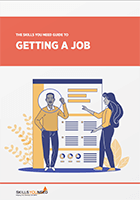
Further Reading from Skills You Need
The Skills You Need Guide to Getting a Job
Develop the skills you need to get that job.
This eBook is essential reading for potential job-seekers. Not only does it cover identifying your skills but also the mechanics of applying for a job, writing a CV or resume and attending interviews.
Interviews are scary. Everyone knows they are scary. The people interviewing you know they are scary and are probably feeling a little bit sorry for you.
However, if you prepare properly, do your homework on the company, focus on how the company will benefit from hiring you, prove the skills you have and come across well while doing so, you will have a much better chance at landing that job.
Now it’s up to you…
About the Author
Emma Trantham works as a Communication Consultant at BrightCarbon where she spends her time turning dense, technical information into compelling visuals, presentations and e-learning.
Continue to: Effective Interview Presentations Overcoming Presentation Nerves
See also: Personal Presentation Skills Self-Presentation in Presentations Employability Skills
8 Surefire Ways to Nail Your Job Interview Project Presentation

The 2021 job market can be a dog-eat-dog world, and employers want to ensure they are hiring only the best and brightest candidates. Acing the interview , therefore, is one of the most vital steps toward landing that dream job.
Increasingly, it takes a lot more than a charming personality and charismatic public speaking skills to wow potential employers. Job interview presentations have become a common step in the hiring process. Job candidates are asked to deliver a short speech or presentation on a given topic.
Employers look for a variety of qualities in job interview presentations. They demonstrate if candidates possess strengths such as effective communication skills, knowledge and aptitude in the field, research skills, the ability to organize information, confidence and enthusiasm.
Most importantly, the interview presentation gives job candidates the opportunity to impress interviewers and stand apart from the competition. A great way to accomplish both of those goals is by creating a visual presentation for your job interview. While you always want to ask and be sure presenting a slide deck during your interview is permissible, the extra effort will go far in cementing a positive impression.
At the same time, your visual presentation won’t stand out from the crowd if it’s just another generic frankendeck that looks like so many others. Fortunately, there are plenty of PowerPoint alternative visual presentation software options that can help design a creative and unique slide deck.
Presenters who design their decks with Beautiful.ai can save time creating a professional-level slide show thanks to artificial intelligence— the built-in designer automatically adjusts the design and format of hundreds of smart slide templates as content is added to them.
Beautiful.ai users don’t have to worry about knowing how to prepare a job presentation for a job interview. The presentation software offers a host of presentation templates for story inspiration, as well as new themes designed to inspire colors and fonts that compliment your story.
Want to nail your job interview presentation? The following eight tips should help you to master your job interview presentation project and score that dream job:
1. Pick a winning topic
When recruiters request an interview presentation, they may or may not request a specific topic. Never assume it’s your choice, however. If job interview presentation ideas aren’t provided, be sure to ask the recruiter if the interviewers have a preference or if you should choose your own.
If you are asked to choose your own interview presentation topic , consider topics about which you are passionate but also that will be more likely to also interest your audience. Try to choose a unique or exciting angle that hasn’t been covered in thousands of interviews before yours. Interview presentation topics should also be positive, professional, and show how bringing you on board will benefit their team.
2. Know your audience
Don’t stop with researching your interview presentation topic. Be sure you also research the company, the current business strategies, and the audience to whom you’ll be presenting.
Get an idea of their levels of expertise so you can present the information at an understandable level. You definitely don’t want to bore your interviewers or even offend them by inadvertently talking down to them, but you also don’t want to present information that flies right over their heads or that holds little comprehensible value.
If you can choose a topic about which your interviewers are passionate— like how your ideas will impact the business— and present it in a unique and creative angle, all the better.
3. Research and fact check
Be sure you thoroughly research your presentation topic. After all, you’re delivering it for the utmost of professional reasons. Utilize data and statistics to reenforce both your research skills and your expertise.
However, checking and rechecking every presented fact is an absolute must. At the same time, be sure to reference the sources of your data and ensure it is all presented in your own words.
4. Grab attention
Obviously, you want your interview presentation project to grab hold of your interviewers’ attention. Nobody wants to put hiring managers to sleep. Motion is extremely effective at attracting visual attention.
After all, what happens if you see something move in the corner of your eye? No matter how intently focused you might be on something else, you’re probably going to turn and look toward the motion.
Animated presentations, therefore, are incredibly effective at grabbing that sought-after attention. Beautiful.ai users can infuse their slide decks by adding animated transitions between slides, animated infographics or even embedded video.

5. Structure your content
To ensure a clear delivery of its message, any presentation must be organized into a logical story structure that carries the topic from beginning to end. While every job interview presentation structure is unique, a good rule of thumb advises to break your presentation into three parts: beginning, middle and end— in other words, the introduction, the body and the conclusion.
The introduction is when you explain the subject of your interview project presentation and why it matters to the audience. The body, which can be divided into three or more sub-sections, contains all the data and supporting details. Finally, the conclusion restates the presentation’s primary message, summarizes the key points and leaves the audience with a lasting impression.
Beautiful.ai users don’t need to be experts at presentation design to design slide decks with effective structures. Instead, you can start with one of our curated presentation templates , ready-to-use designs that are fully customizable with just a few clicks. Presentation samples like our Creative Portfolio template or Small Business Plan template are ready to go with smart slides chosen for their ability to demonstrate specific types of processes and topics.
6. Illustrate your data
Presentation audiences are less likely to fully comprehend your data based on a list of facts and figures, and interview presentation audiences are no exception. Whether you're showing how you impacted growth at your last company, or sharing industry trends, visual aids like infographics, charts, and graphs give all of that data meaning.
Beautiful.ai users can not only choose from a variety of smart slide templates with charts and infographics, but our AI will ensure that every visual aid is simple, attractive and extremely informative. Presentation designers can even add extra pizzazz to their interview slide decks by controlling the animation of their infographics.
7. End on a high note
Obviously, you want your job interview to be memorable, and closing on a high note will help to ensure you leave a lasting, positive impression. Your visual presentation provides plenty of opportunity to close with a powerful conclusion.
Ending an interview presentation on a high note can be accomplished in a variety of ways. Some presenters choose to close with a moral to the story, an applicable joke or an inspiring quotation. Beautiful.ai’s many presentation templates feature all sorts of job interview presentation samples that users can reference for inspiration.
8. Practice and prepare
Practice makes perfect, and why would you rely on anything less when trying to land your dream job? By practicing your job interview presentation delivery, you can help ensure you customize it to the proper length, strategically control your nonverbal communication and ultimately deliver your presentation with authority.
While you want to sound confident, you don’t want to sound overly rehearsed, so create basic note cards to follow your structure, but don’t read from a script.
It’s also vital that you prepare for unexpected obstacles. After all, you rarely get a do-over when interviewing for a job. Plan ahead for what you’ll do if you should have technology failures like a malfunctioning projector, poor internet connection or lost audio feed. Be prepared for any situation, including a total loss of power. What would you do if you suddenly had to wing it?
Understanding your visual presentation software isn’t the only technical knowledge you might need in a modern job interview. Remote interviews conducted entirely in an online environment are increasingly common.
Be mindful that engaging an online audience requires different strategies than engaging an in-person audience. Before creating your slide deck, be sure you’re familiar with the communications technology you’ll be using.
Take every effort to ensure your slideshow presentation is compatible with and you can comfortably use whatever conference software the potential employer uses, whether it be Skype, Zoom, Google Meet or another service.

Samantha Pratt Lile
Samantha is an independent journalist, editor, blogger and content manager. Examples of her published work can be found at sites including the Huffington Post, Thrive Global, and Buzzfeed.
Recommended Articles
6 essentials for building your next marketing pitch, how to create a great product presentation, presenting in front of a room full of execs: 11 tips to get you through it, communicate beautifully with melody wilding.
Our range of over 180 online courses are fully accredited, trusted by more than 3 million learners and ideal for training you and your team.
- Food Hygiene
- Health and Safety
- Safeguarding
- Asbestos Awareness
- Fire Safety
- Mental Health
- Health and Social Care
- Business Essentials
- Team training

Welcome to the Hub, the company blog from High Speed Training.
Select a topic to find the most up to date, practical information and resources produced by our experts to support you in your professional life.
- Health & Safety
How to Start a Presentation for an Interview
Interviews can be really tense situations. Throwing a presentation into the mix only adds to that pressure. What can you do to ease those nerves and start your presentation in a calm and confident manner? How can you captivate your audience and help assure them that you’re the right candidate for the job? This article outlines a number of useful tips to guide your interview preparation and address these important questions.
Preparing a Presentation – Where to Begin?
If you plan your presentation in advance you’ll increase your likelihood of success. Make sure you know what type of message you want to convey and think about the most effective way to deliver this message.
Ready? Take a look at our six preparation tips below.
1. Tell a personal story
Presentations can often be over-professional, impersonal affairs. But they don’t have to be.
Adding a storytelling element to your presentation can ensure that your delivery is both down-to-earth and professional at the same time, which will make your presentation a whole lot more engaging overall.
Think of any personal experiences of your own that are applicable to the content of your presentation. Do you have anything of value that could aid the delivery and help with engagement?
Example: Say you have an interview for a HR role at an international corporation HQ in the city. You’ve been told that you need to deliver a presentation on how you manage conflict in the workplace (we’ll use this example throughout).
By opening with a relevant story of your own about a time when you successfully and diplomatically resolved a conflict outside of the workplace – at home, or wherever it may be – you’ll:
- Demonstrate your competency in this area
- Ease any tension that is characteristic to the situation
- Capture your audience’s attention with an account that can only be delivered by you – making it unique and remarkable
- Openly display your personality and values, enabling the employer to make a better informed selection decision – beneficial for everyone involved

2. Use media
Starting your presentation can be the most difficult bit.
You’re tongue-tied, stumbling over words and your heart is beating so fast.
Give yourself the opportunity to collect yourself by using some form of media early on in the presentation.
Begin your presentation with a quick introduction to who you are and what the presentation is about (use a title slide and a ‘What I’ll cover’ slide, for example) and then incorporate a media break.
Use video, music, an infographic – whatever, as long it’s suitable and on-topic, use any form of media that allows you to have a breather and recover from that all too familiar fear of public speaking.
Example: so here we are again – biting your lips and fumbling with your hands as you wait to open your presentation for the HR role.
Your presentation is on conflict management, a fairly sensitive topic, which you’ll want to get right. But don’t sweat it; simply introduce yourself and your specific presentation details/content, then bring in an attention-consuming piece of useful media.
In our case, it could be a funny clip of workplace conflict from a TV Program such as The Office* – this will lighten the mood and create a talking point. You’ll be back in the driver’s seat, and you’ll be surprised by how quickly those nerves calmed down.
* Disclaimer: implement with appropriateness! Only you can decide on what sort of media will be acceptable to use in your situation, so think about this one carefully.

3. All eyes on you
Feeling a little more confident?
Create a memorable moment by temporarily presenting without the aid of a prompt.
Open your presentation with conviction by using a blank slide as your second slide.
Once you’ve introduced yourself and the topic of your presentation, most people will expect a thoroughly professional delivery from there on in.
Surprise them; switch the attention to you, shatter expectations, disrupt conventional presentation practice and display clear confidence in your ability to speak independently.
Using such a brave tactic will help in stimulating and retaining interest in your presentation throughout, and perhaps keep you top of mind when the employer is making a selection decision.
It will also show your potential employer just how much you know about the topic at hand.
Example: Conflict solving requires someone with a calm temperament and an almost instinctive ability to thoroughly – and empathetically – understand the issues faced by people other than yourself.
Show that you’re able to remain calm under scrutiny with all eyes in the room on you and truly understand a topic without any form of prompt using this tactic.
Need a Course?
Head over to our Business Skills Course Library and browse available courses from Presentation Skills Training to Leadership and Management Training . All courses are fully online so you can complete them at your own pace, on your commute or in the comfort of your own home.
4. Incorporate props
Presentations can sometimes be a little boring to watch and listen to.
That’s no fault of your own; one person talking for a prolonged period of time is not a normal situation – how often does that actually happen in everyday life?
Engaging your audience during a presentation is a common problem that is widely discussed. I won’t go into it here as that’s not the core purpose of this post.
(This post from American Express details nine simple tips for preparing an engaging presentation if you’re interested).
So what props should I use? Think what you can use/bring that will be both relevant and add value to your presentation.
If you can’t think of anything, then don’t bother – this tip will only work in set situations.
Example: For your conflict resolution presentation, you could bring in something that will create a talking point and engage your audience.
In this situation, we’ll go with a newspaper – you could start a debate about a widely discussed controversial topic, and use this quick exercise as an illustration of how you’re able to apply your conflict solving ability in any circumstance.

5. Start with something you know
It’s natural to be concerned about freezing and making mistakes in the presentation that you’re preparing for.
If that were to occur, it’d be likely to happen at or near the beginning of your presentation when your emotions are at their highest.
To ease those nerves and open in a calm and confident manner, it might be advisable to use content that you know inside-out – that way, you’ll feel more secure in the first few minutes of your delivery.
Once you’ve sailed effortlessly through that first part of the presentation, you’ll find the remainder of your content will flow just as easily now that you’ve settled those self-doubts.
Example: Your presentation on workplace conflict is expected to last 20 minutes – that’s a lot of content to get through!
Before you find yourself scrambling for the right words, simply introduce yourself and the topic of your presentation, then start with something such as:
- Simple conflict stats that are easy to memorise
- An article or study that you really like and have read a few times
- Cornerstone conflict management knowledge that’s embedded deep in your brain

6. Engage your audience with an activity
A presentation is all about you.
It doesn’t necessarily have to be though.
By introducing an activity for your audience to get involved in, you can take the spotlight off you temporarily, and seize a rare opportunity to connect with your audience in a candid manner.
It’s pleasing just how much this strategy can reduce tension when starting your interview presentation. Once you’re able to start a dialogue with your audience, the unnatural situation becomes significantly more manageable.
Example: Well, you could make this one real interesting. Why not initiate a role play of a common workplace conflict, and then show the potential employers how you would deal with said conflict?
This is a fun exercise that shows your ability to apply the knowledge that you possess and will hopefully put your potential employers in a better mood for the rest of your delivery!

All of the techniques I’ve outlined above could be applied to almost any interview situation in which a presentation is required – now it’s over to you to get creative with how you’re going to actually implement these ideas!
In writing this post I made a conscious effort to consider different personality types in the interview presentation opening tips that I have suggested.
But these actionable methods represent only a very small proportion of ideas that you can utilise for making a lasting impression in your interview presentation.
Further Resources:
- Communication Skills Quiz
- How to Write a Business Letter & Envelope
- Presentation Skills Training
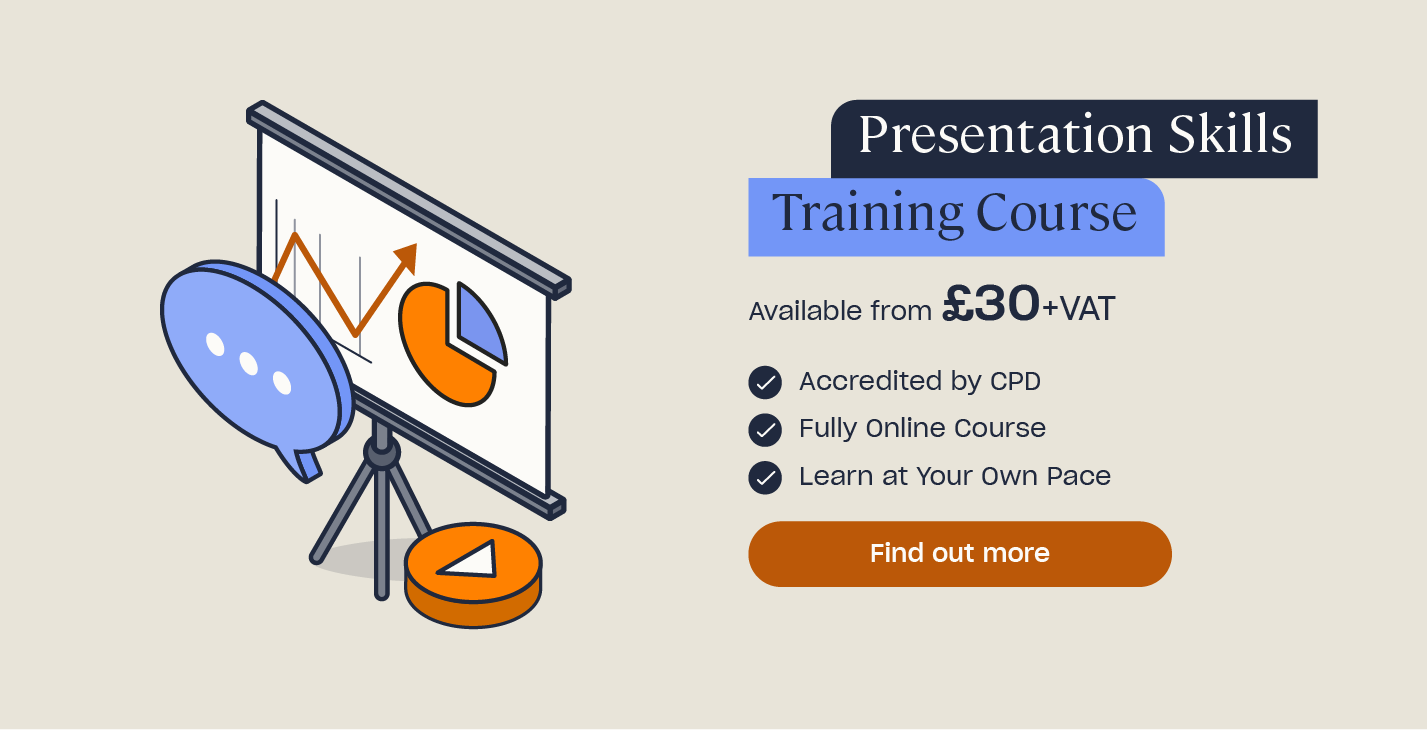
Post Author

You may also like


- Like us on Facebook
- Follow us on Twitter
- Connect with us on LinkedIn
- Check us out on Pinterest
- Our Blog RSS Feed
How to Make a 10-Minute Presentation for a Job Interview
Posted August 28th, 2023
A job interview can be a nerve-wracking experience, but one of the most common challenges candidates face is the infamous presentation. Crafting a compelling 10-minute presentation that succinctly showcases your skills, experience, and enthusiasm can set you apart from the competition.
The key is to strike a balance between delivering valuable information and keeping your audience engaged within the time constraints.

Craft a Clear Structure
A well-organized presentation is crucial for keeping both you and your audience on track. Start with a concise introduction that introduces yourself and provides an overview of what you’ll cover. By using an AI presentation builder, you can do this with ease and have more time to focus on the main content.
When you move on to the main content, which could be divided into 3-4 key points, each point should have a clear beginning, middle, and end. Use bullet points, visuals, or anecdotes to illustrate your points effectively. End with a strong conclusion that summarizes your key takeaways and reinforces your main message.
Understand Your Audience and Objective
Of course, before crafting the main content, take a moment to understand your audience – the interview panel. Research the company’s culture, values, and the specific role you’re applying for.
Tailor your presentation to address their needs and expectations. Are they seeking a problem solver, a team player, or a creative thinker? Align your content with these expectations.
Define your presentation’s objective – what key message or impression do you want to leave them with? Keep this objective in mind as you structure your presentation.
Keep It Concise and Relevant
Remember, you only have 10 minutes, so every second counts. Avoid going off on tangents or including excessive details. Stick to the most relevant information that directly supports your main message and the job requirements.
Use the “so what?” test – ask yourself if each piece of information contributes to your objective. If not, consider omitting it. Focus on showcasing your skills and accomplishments that directly relate to the role you’re applying for.
Engage with Visuals and Delivery
Visual aids can enhance your presentation’s impact. Use slides sparingly, and make sure they are visually appealing and easy to read. Avoid clutter and use bullet points, graphs, or images to convey information quickly.
Practice your delivery to ensure a confident and engaging performance. Maintain eye contact, vary your tone of voice , and use gestures to emphasize key points. A well-delivered presentation can demonstrate your communication skills and enthusiasm for the role.
Practice and Refine
Once you’ve created the initial draft of your presentation, it’s time to practice and refine your delivery. Rehearsing helps you become familiar with the flow of your content and ensures that you stay within the time limit. Practice in front of a mirror, record yourself, or even better, rehearse in front of a friend or family member who can provide constructive feedback.
Pay attention to your pacing – speaking too quickly can make you appear nervous while speaking too slowly might lose your audience’s attention. Refine your content based on the feedback you receive, making sure your presentation is clear, concise, and engaging.
Address Potential Questions
Anticipate potential questions the interview panel might have after your presentation. Prepare concise answers that reinforce your main message and showcase your expertise. This preparation demonstrates your thoroughness and ability to handle inquiries effectively.
It’s also an opportunity to show how you think on your feet and adapt to unexpected queries. Addressing potential questions can help you appear confident and well-prepared, further enhancing your credibility.
Rehearse Natural Transitions
Smooth transitions between different sections of your presentation are essential for maintaining a cohesive flow. Practice transitioning between points seamlessly so that your presentation feels like a well-structured narrative rather than a series of disjointed segments.
Use transition phrases or statements to guide your audience through your content, ensuring that they understand how each point connects to the next. These transitions not only enhance the organization of your presentation but also make it easier for your audience to follow your train of thought.
Utilize Compelling Opening and Closing
Your presentation’s opening and closing moments are critical for making a lasting impression. Start with a captivating hook that grabs the interview panel’s attention and sets the tone for your presentation. This could be a relevant statistic, a thought-provoking question, or a brief anecdote related to the job or industry.
Similarly, your closing should leave a strong impression. Summarize your key points, reiterate your main message, and offer a clear call to action . This might include expressing your enthusiasm for the role, thanking the panel for their time, and expressing your eagerness to move forward in the hiring process.
Incorporate Real-World Examples
While discussing your skills and experience, don’t just rely on general statements – back up your claims with real-world examples. Share specific projects you’ve worked on, challenges you’ve overcome, or achievements you’ve attained.
Quantify your successes whenever possible to provide a tangible sense of your impact. Incorporating real examples not only adds credibility to your presentation but also makes your achievements more relatable and memorable for your audience.
Manage Nervousness
Nervousness is natural, but managing it is crucial for a successful presentation. Practice deep breathing exercises before you begin to help calm your nerves. Visualize a positive outcome to boost your confidence. Remember that the interview panel is interested in what you have to offer, and they want you to succeed.
Don’t be afraid to acknowledge your nervousness at the beginning of your presentation – this can actually make you appear more relatable and human. As you start speaking and engaging with your content, you’ll likely find your nervousness gradually fading away.

By tailoring your content to your audience, maintaining a clear and concise structure, utilizing engaging visuals, and practicing your delivery, you can present yourself as a confident and capable candidate.
Remember that the goal is not just to inform but to leave a lasting impression that resonates with the interview panel. With these strategies in your toolkit, you’re well on your way to mastering the art of the 10-minute job interview presentation.
- Business Advice
- Employer Advice
- Job Seeker Advice
Search All Jobs
Ready to Hire?
Industries we serve
•Aerospace & Aviation •Architectural firms •Automation & Robotics •Automotive •Civil & Structural engineering firms •Chemical •Construction •Consumer Products
•Data Centers •Electronics/IoT •Energy & Utilities •Finance •Food & Beverage Manufacturing •Healthcare IT/Network Systems •Industrial Products •Internet/E-Commerce •Instrumentation & Controls
•Logistics •Manufacturing •Material Handling •Medical Device •MEP Engineering Firms •OEMs •Oil/Gas/Petrochemical •Pharmaceutical •Wireless Telecom
Advice from Apollo

Ace the Presentation
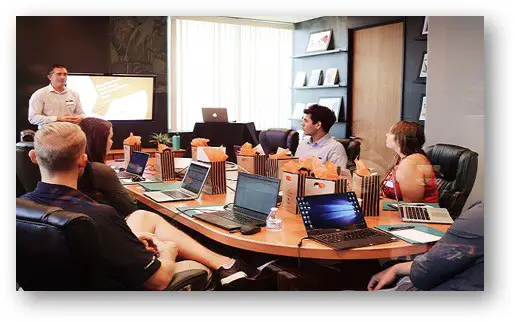
55 Job Interview Presentation Topics
The good news is that shouldn’t be the end of the world. That nightmare can turn into a dream with prior preparation and research.
There is a growing trend in some companies when recruiting, where they ask their interviewee to give a presentation as part of the interview process, and they either give the topic to them or ask them to come up with one.
The person applying for the job can use the time before the interview presentation date as an advantage to research and prepare for acing the presentation.
When choosing the topic, one thing to have in mind is the position to be filled, which will help when deciding what to present to the interviewers, as the topic should be related to the position. Otherwise, it will deviate everyone’s focus.
After quick and thorough research, it is possible to come up with basic information about the company and position offered to choose the topic for the presentation.
I have had a lot of success in preparing my job presentations or case study presentations and landing the job offer, it comes natural to me, but also, I take a lot of time to do research and structure the presentations in a compelling and exciting way. It takes time to master that skill, but don’t despair, because you can get help with your PowerPoint presentations from experts. Contact the guys at Custom Writings , they’re a presentation writing service which will handle your project on any topic.
Having said all that, let’s look at 55 ideas from 11 topics (5 for each) for a job interview presentation.
- Arts and Culture
- Sustainability
- Human resources
Each one of the topics above can be a broad theme and be related to anything and everything, though they can be focused on specifics of a job description, for example, to meet the expectations of the interviewers and judge how good your research about the topic and the position is.
Related Posts:
10 Dos and Don’ts for Job Interview Presentations
What Makes a GOOD Job Interview Presentation? 7 Key Aspects
8 Valuable Tips for Unemployed Fresh Graduates (Or anyone really)
9 Tips for Delivering a Stellar Case Interview Presentation
11 Great topics for a job interview presentation
1. arts and culture.
Arts and culture involve many aspects of society, such as music, movies, performances, TV, literature, and so on.
When presenting a topic about Arts and Culture, the audience will probably be familiarized with it. Again, research will be crucial here. It is absolutely important that the presenter knows what he/she is saying. Thorough research will get that job done.
Arts and Culture Job Interview Presentation Topics:
- How to get more people to read books?
- Learning foreign languages as a preventive measure when traveling.
- How important are museums for local communities?
- Are movies harmful to child education?
- How to improve music’s efficacy as a language learning tool?
2. Business
Topics in the business section will be focused on people and positions in the corporate world, leadership, management, human relations, communications, and similar subjects. This subject might need more research, and the data presented will have to be exact as those should be assumed to impact aspects of a real-time workplace.
The interviewers may see in a presentation an opportunity to find new ideas for issues they currently face in the company or even new working approaches to be applied. Serious research and real-time data presented in an interview can really help the candidate get picked for a position.
Business Job Interview Presentation Topics:
- How to make the workplace learning-friendly?
- Ways to make remote collaboration work.
- Improving communication between co-workers.
- How to measure the ROI in all Marketing campaigns?
- What are the best strategies to improve Customer Experience and loyalty?
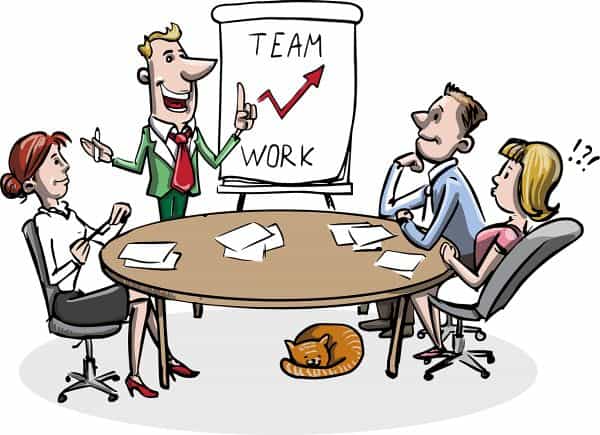
3. Education
Education is a subject that interests many, if not everyone. When being dealt with, one thing to keep in mind is that a quality education today will shape the future of a country and the world, what can be improved and what can change to make education better.
A lot has been said about Educational systems. All those opinions should be used to understand perhaps what is missing and see if things can change.
Education is a subject that can give a lot of options for research and problem-solving. It should be seen as an advantage to have this subject on hand.
Education Job Interview Presentation Topics:
- The impact of a parent’s engagement in school life.
- How do curriculum changes affect the process of learning?
- Homeschooling: is it better than the traditional education system?
- Does remote education work? How to Improve it?
- Secular Education: Obsolete?
This is a subject that also interests many, and if well presented, can engage the audience right away. People are constantly thinking about ethics, and how something that seems good for a group of people can look bad to others. It can, at times, be intriguing too.
If you bring in the right questions and get people to wonder, you will definitely engage whoever is listening.
That is an opportunity to call the attention of interviewers to research results and interesting finds about ethics. Since ethics involve some critical thinking, it creates an opportunity to showcase some of it to the audience too.
Ethics Job Interview Presentation Topics:
- Should cities have cameras in the streets?
- 3-D printing and development of human organs.
- Death penalty: does it solve the problem?
- Is taking gifts from your business partners anti-ethical?
- Is love in the Workplace forbidden? Can we control our emotions?
Science is also a broad topic related to researching and bringing results in certain areas. Trying to understand the world, its creation, and how to make it better through analysis hypothesis and experiments with elements found in nature.
Science topics to be chosen will be broad and involve every aspect of life to be known.
Science Job Interview Presentation Topics:
- How was the planet created?
- Immortality: does it align with nature’s ways of working?
- What is “Dark Matter” and why is it important?
- Is climate change going to render our planet inhospitable in 50 years?
- How can we save the World from the next global pandemic?
6. Sustainability
The subject of sustainability is a very interesting topic that has gained a lot of attention recently due to proposed changes to help decrease the effects of global warming. It should not be only important at certain times though.
It should be adopted forever, as that is the only way to co-exist with the biosphere to both meet our needs and not jeopardize nature, and this way, future generations can enjoy a planet like the one we found and even better. So this subject can proportionate a broad choice of topics as well.
Sustainability Job Interview Presentation Topics:
- How to adopt sustainable approaches in our daily lives?
- What are ways to promote a sustainable lifestyle among students?
- To what extent are catering and food products certified as organic or fair trade food?
- Fossil fuels vs Renewable Energy: How sustainable it is to use only one of them?
- Donations to poor countries and its impact on future generations
7. Technology
When the subject is technology, the thing that comes to mind for almost everyone is the digital era. A lot has changed and is still changing; many sectors adopt these changes in their environment and would be interested in knowing more about the so-called technology and how it would help them in the digital era.
Technology Job Interview Presentation Topics:
- The impact of social media in the development of children.
- Is 5G more important than people’s health?
- Is AI necessarily an enemy for humanity?
- How can we use Data Analytics for Improving Decision Making?
- Is Zoom really an unsafe collaboration and video calling tool?
Society is another subject that will resonate with everyone, and that can be used as an advantage as there can be many topics to choose from. How people relate within a community and how those relations are seen by the ones in it.
It is crucial to improve relations in society, as the individuals will constantly interact with one another.
Society Job Interview Presentation Topics:
- Are we doing enough to end poverty?
- Volunteering in your community.
- Race relations need to be improved.
- How to improve malnutrition in Africa?
- Are the Indigenous people being treated fairly?
9. Human resources
The personnel responsible for recruiting people capable of doing the required job; training the recruited people; promoting a good working environment, and monitor performance.
This subject will be narrowed to aspects of companies. These will need people capable of selecting from a broad group, the ones that fit with the job description.
Human Resources Job Interview Presentation Topics:
- Creating a stress-free environment.
- Balancing HR Strategies with business growth.
- Harassment of women in the workplace.
- Career Progression Plans
- Effective Succession Planning
10. Nutrition
A lot of people only think about food upon hearing the word nutrition. Well, they do not deviate from the subject. Though how and what people eat will influence their body, mind, and spirit, there are researches that prove that food, for example, influences the mood of a person.
So a company dealing with food or health might want a candidate to present the results of research in this area. Influences of nutrition in other areas of life would then be attractive to interviewers operating in this area.
Nutrition Job Interview Presentation Topics:
- Habits of food purchases and association with diet.
- Practice and application of knowledge by nutrition students.
- Childhood Obesity: Possible causes and solutions.
- Organic food vs. Processed Food: How to keep the balance?
- What is the most effective way of reducing weight beyond your 30s?
11. Logistics
The process involving the organization and transportation of goods from one point to another is what logistics comprise. These goods need to be safely handled during transportation and storage until handed to customers.
Companies should focus on collaboration between the transport providers, the buyers, and the vendors in order to have a good final result.
Logistics Job Interview Presentation Topics:
- Transportation as a Vital Aspect of Logistics and Supply Chain Management.
- Radio Frequency Identification: the Use of a Minuscule Computer Chip to Track the Product.
- Recruiting quality drivers for your trucking company.
- Internation ship cargo tracking
- How to expedite the Customs Clearance process?

In conclusion,
There is a broad range of topics to be chosen or, in some cases, given. All one has to do is dedicate some time before the interview to research the topic and develop some good ideas and facts to ensure the interviewers get interested and engaged in the presentation.
A reliable and facts-rich presentation might save the candidate a spot on the company. It can all be resumed to good research, one that goes to the roots of an issue and brings answers and solutions to be taken into consideration.
Similar Posts
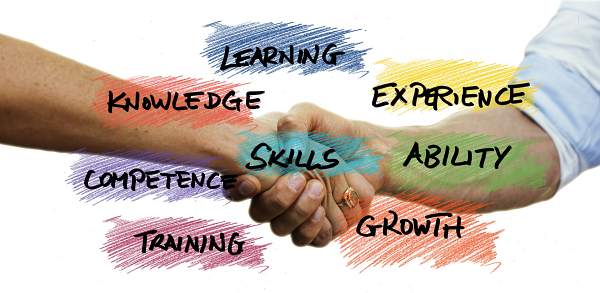
INTERPERSONAL SKILLS VS HARD SKILLS: Definition, Importance
In job descriptions, candidates are often asked for a combination of interpersonal and hard skills. Interpersonal Skills vs Hard Skills, what you should know and dedicate your time and resources to learn – check below. Hard skills are related to professional knowledge, tools, or techniques that allow us to work within our profession. In contrast,…

How to Improve your Communication Skills – 7 Essential Tips
Before we delve into how to improve your communication skills, let us first address the basic definition of communication. Communication in simple terms can simply be defined as the act of transferring information from one place to another or, from one person to another. There are many forms of communication, such as verbal (words of…

9 Interpersonal Skills to add to your resume or CV
A resume serves, above all, to define whether or not we have alignment with the open position. If we look at the job ad, we will know the most important and proper skills to show that we’d be the ideal person for the position. The job ad usually describes the critical skills that interested professionals…

5 Good and Bad Mannerisms that Influence your Hiring
In a job interview, your verbal communication skills, reasoning, and problem-solving skills are extremely important skills to demonstrate. However, very underrated are the importance of good and bad mannerisms or body language skills. I have personally interviewed hundreds of candidates, and although getting a candidate with impressive skills is a given, the attitude and culture…
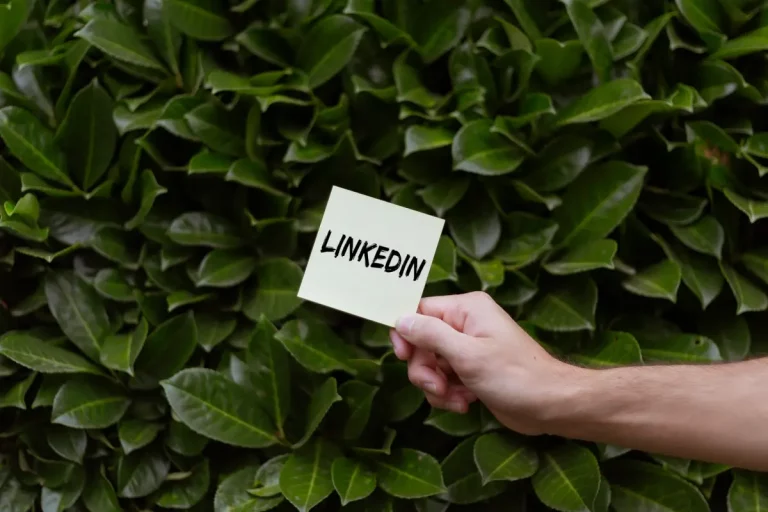
LinkedIn: Learn about it and Use it for Professional Growth
Have you ever stopped to think about how CVs were created back in the day? Everything changed when we included professional information within a single platform: LinkedIn! Today, you can’t go without knowing what LinkedIn is and all the possibilities you can have with this social network. But the truth is that it’s been a…
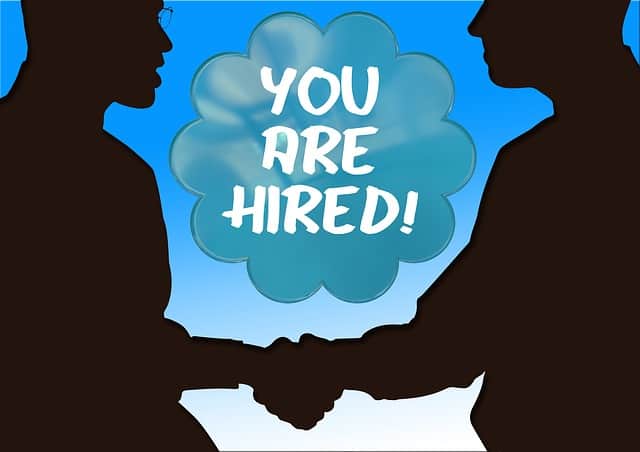
What Makes a Good Presentation For a Job Interview? 7 Tips
Interview presentations are fast becoming a key part of the recruitment process as several hiring agencies are making it a mandatory exercise for short-listed candidates. It would seem that many employers are getting more interested in employees with impressive communication skills, which, when hired, can be positively used to represent their brands. As a job…
Got any suggestions?
We want to hear from you! Send us a message and help improve Slidesgo
Top searches
Trending searches

suicide prevention
8 templates

computer network
75 templates

spring season
28 templates

cybersecurity
6 templates

46 templates
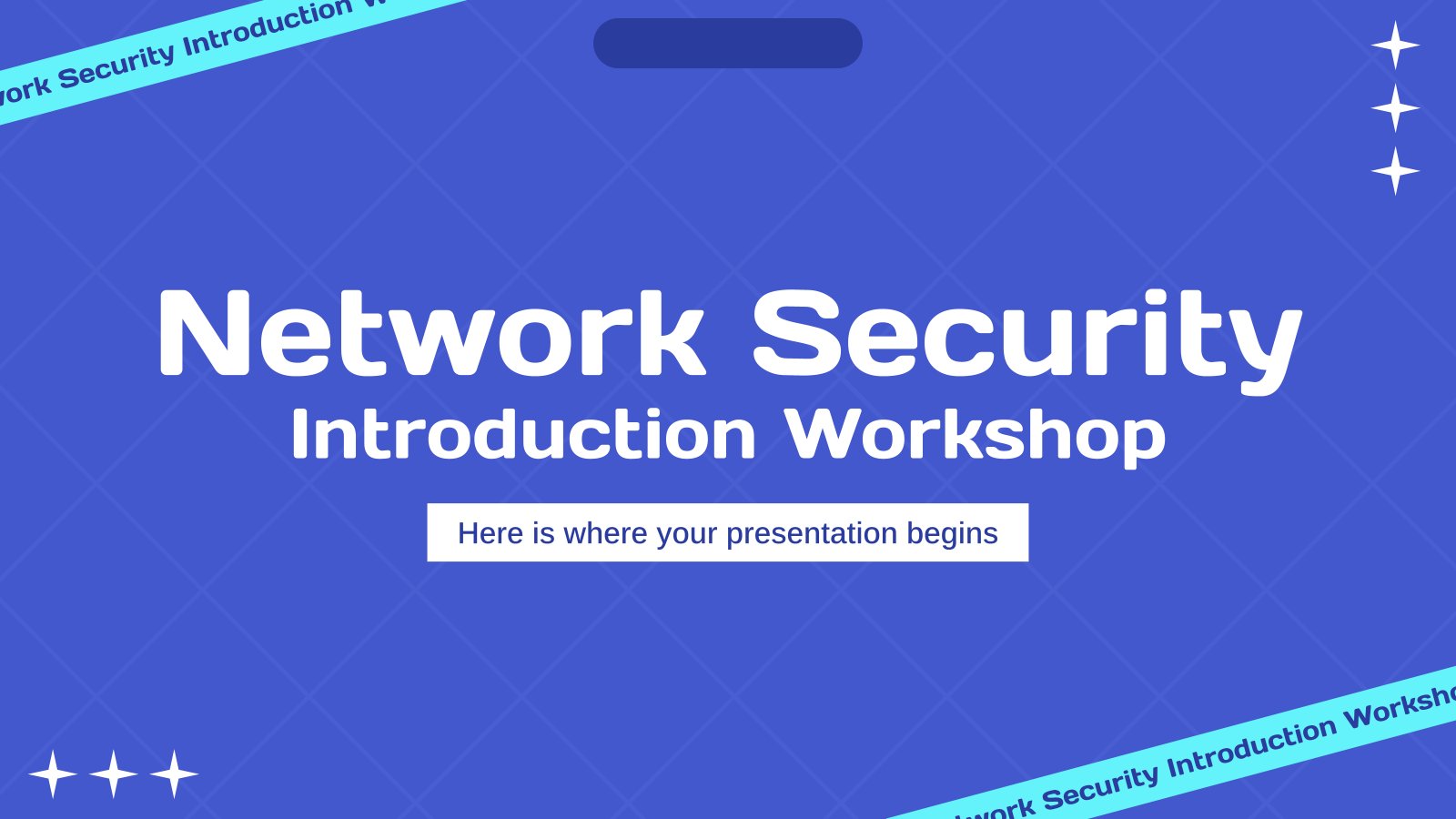
18 templates
Self Introduction for a Job Interview
Self introduction for a job interview presentation, free google slides theme and powerpoint template.
Are you preparing for an important job interview? You can either use this Google Slides & PowerPoint template to make a lasting impression by doing a self-introduction, or you can use it to prepare something akin to a résumé! There are elegant geometric shapes and gradients, so the "grabbing attention" box can be ticked. Have a look at this design and, if necessary, make the most of the cover letter included, or add more shapes, since we've included more of them in the final slides as extra resources!
Features of this template
- 100% editable and easy to modify
- 7 different slides to impress your audience
- Contains easy-to-edit graphics such as graphs, maps, tables, timelines and mockups
- Includes 500+ icons and Flaticon’s extension for customizing your slides
- Designed to be used in Google Slides and Microsoft PowerPoint
- 16:9 widescreen format suitable for all types of screens
- Includes information about fonts, colors, and credits of the resources used
How can I use the template?
Am I free to use the templates?
How to attribute?
Attribution required If you are a free user, you must attribute Slidesgo by keeping the slide where the credits appear. How to attribute?
Related posts on our blog.

How to Add, Duplicate, Move, Delete or Hide Slides in Google Slides

How to Change Layouts in PowerPoint

How to Change the Slide Size in Google Slides
Related presentations.

Premium template
Unlock this template and gain unlimited access

Register for free and start editing online
Newly Launched - World's Most Advanced AI Powered Platform to Generate Pitch Decks that are Editable in PowerPoint

Researched by Consultants from Top-Tier Management Companies

Powerpoint Templates
Icon Bundle
Kpi Dashboard
Professional
Business Plans
Swot Analysis
Gantt Chart
Business Proposal
Marketing Plan
Project Management
Business Case
Business Model
Cyber Security
Business PPT
Digital Marketing
Digital Transformation
Human Resources
Product Management
Artificial Intelligence
Company Profile
Acknowledgement PPT
PPT Presentation
Reports Brochures
One Page Pitch
Interview PPT
All Categories
Top 7 Sales Presentation Interview Templates with Examples and Samples
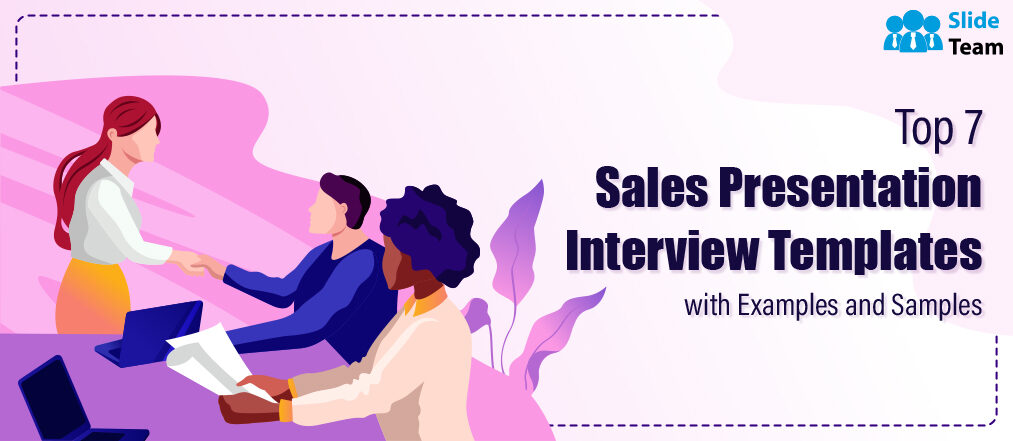
During a sales presentation interview, candidates demonstrate their sales talents and abilities to prospective employers. It is an important aspect of the business world. It entails persuading and presenting a good, service, or concept to capture the audience and show off one's sales prowess. Any sales professional must possess strong communication and presentation skills since they serve as the basis for creating long-lasting client relationships and promoting company success. This article explores the relevance of sales presentation interviews and offers crucial templates and advice to shine in this cutthroat environment, giving you all you need to succeed.
Why is a Sales Presentation Interview Crucial?
The sales presentation interview is essential because it is a yardstick for a candidate's capacity for clear communication, rapport-building with clients, and deal-closing. How a candidate positions a product or service can make all the difference in convincing potential clients to choose their offers over rivals in the competitive sales world. A strong sales presentation indicates the candidate's mastery of the art of persuasion, their comprehension of the audience's demands, and their capacity to customize their pitch accordingly.
As these are essential qualities for successful salespeople, candidates must demonstrate their charm, product expertise, and sales acumen. Candidates can show off their abilities to think quickly under pressure, modify their strategy in response to audience input, and confidently handle objections during this interview. A strong sales presentation can make an excellent first impression on recruiters and pave the way for a candidate to succeed in a sales position.
Why Should You Use Sales Presentation Interview Templates?
Candidates can structure their pitch efficiently, resulting in a well-organized and compelling presentation, by using sales presentation interview templates. Instead of wasting time on formatting and content structuring, these templates provide applicants with a starting point and allow them to concentrate on improving their delivery. The templates serve as a guide, including best practices and tried-and-true tactics that have worked well in sales situations.
Candidates may create a polished and expert presentation that persuasively sells their message to prospective employers with the help of these templates. Additionally, templates speed up the preparation process, allowing applicants to invest more time studying and practicing. It encourages consistency in the delivery and ensures that crucial elements of the presentation—like resolving consumer pain areas, showing product features, and offering a persuading call to action.
Template 1: Concept Of Sales Presentation Training PPT
With the help of this template, applicants get to know the principles of sales presentations, including the significance of understanding the audience, outlining specific goals, and using persuasion tactics. It emphasizes the value of careful planning and in-depth product knowledge to provide an effective presentation. Candidates will learn how to organize their material to take the viewer on a discovery journey while showcasing the benefits of the good or service at each stop.
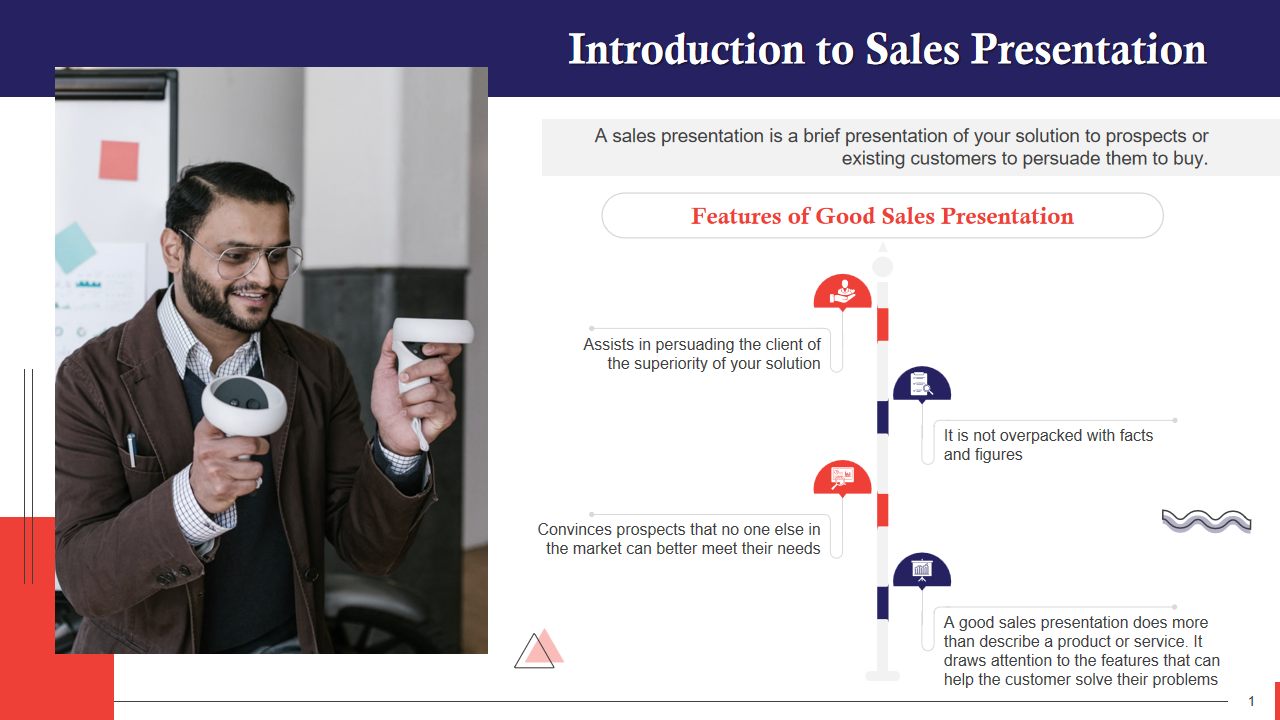
Click to download.
(Optimize your sales strategy with our Sales Activity Report Templates – the ultimate resource to track, analyze, and refine your sales efforts for measurable growth. Elevate your performance and achieve impactful results with data-driven insights.)
Template 2: Customize Sales Presentation Based On The Audience Training PPT
The template emphasizes the necessity of customizing the presentation to the audience's needs, problems, and preferences. It gives candidates helpful information on performing in-depth research on the target market and enables them to establish more personal connections with potential customers. Candidates can more successfully address particular problems and demonstrate how the product or service satisfies audience needs by personalizing their presentation.
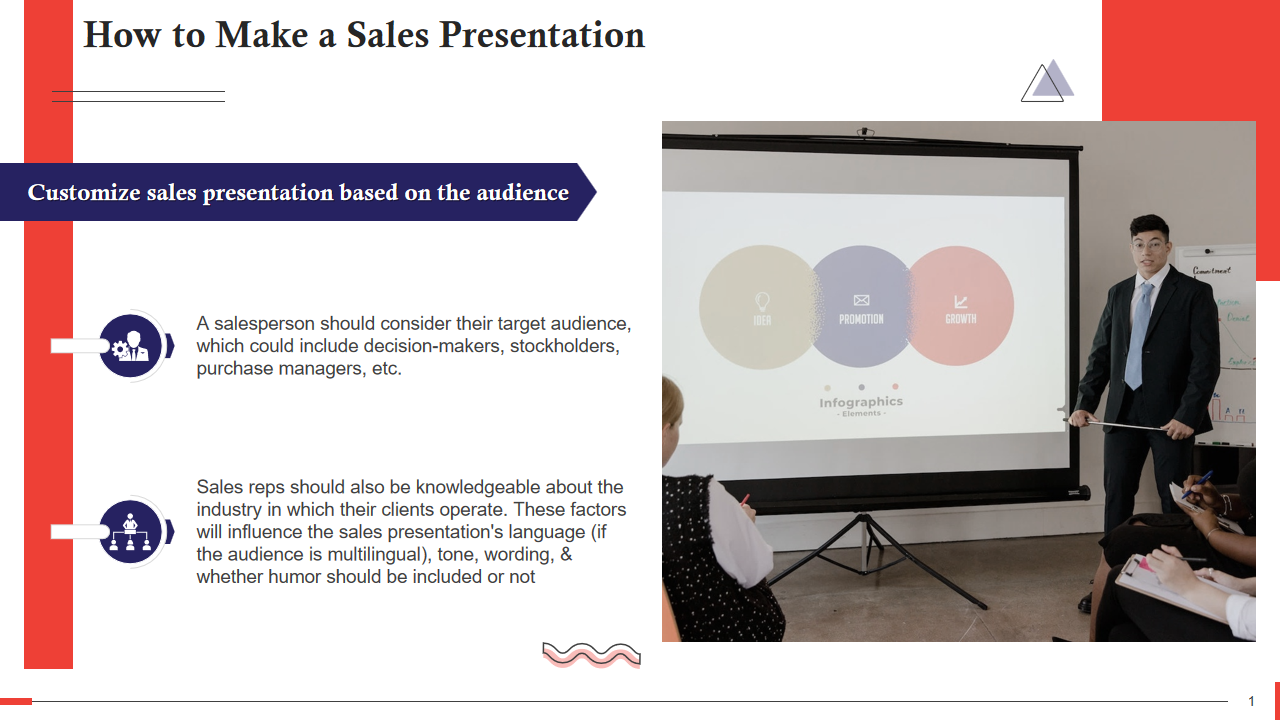
Template 3: Sales Presentation Tips For Salespeople Training Ppt
A thorough manual that provides helpful advice on how to boost self-assurance, deal with anxiety, and make a sales presentation that stands out from the crowd. This template offers guidance on creating an attention-grabbing introduction, keeping the audience's interest throughout the presentation, and making an impactful conclusion. Candidates will learn strategies for combining storytelling, facts, and graphics to give the audience an engaging experience.
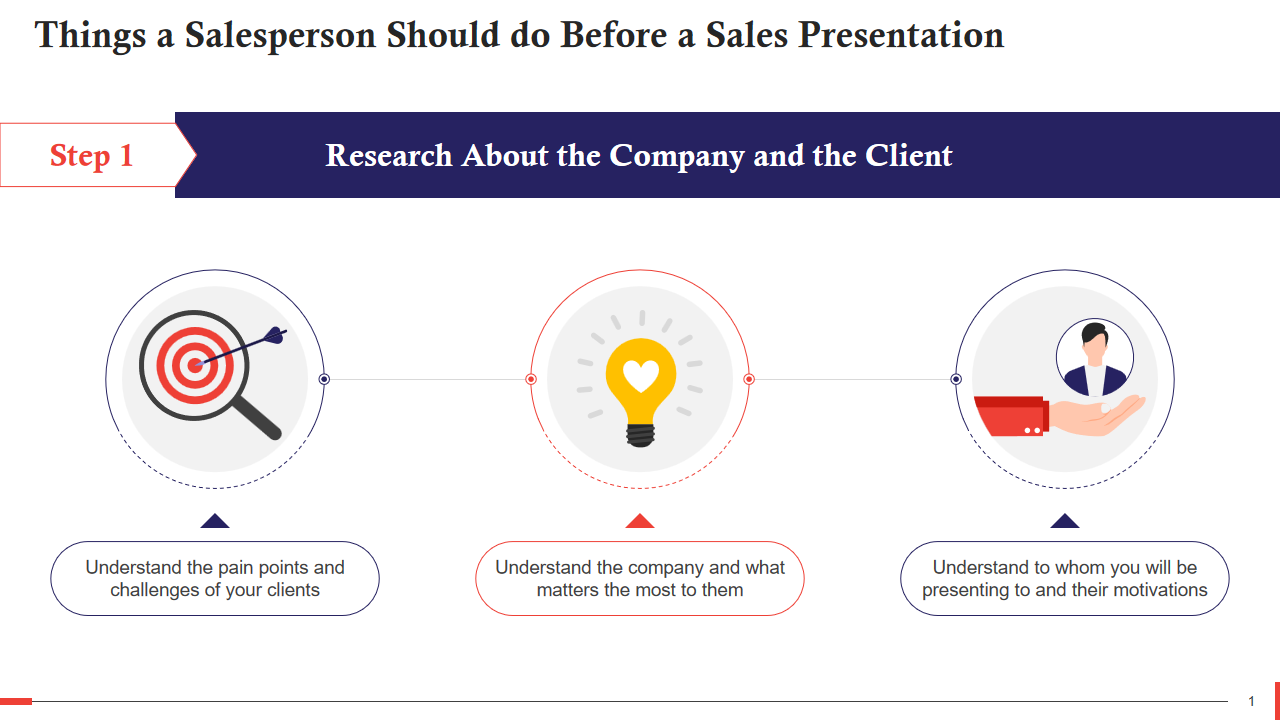
Template 4: Tips For Better Sales Presentation Training Ppt
This template offers tips on how to use visual aids effectively, construct compelling anecdotes, and take advantage of body language to create a riveting and memorable presentation. It also underlines how crucial it is to highlight the advantages of the service and show how it might alleviate the audience's problems. Candidates will pick up helpful advice on how to stay upbeat and excited during the presentation.
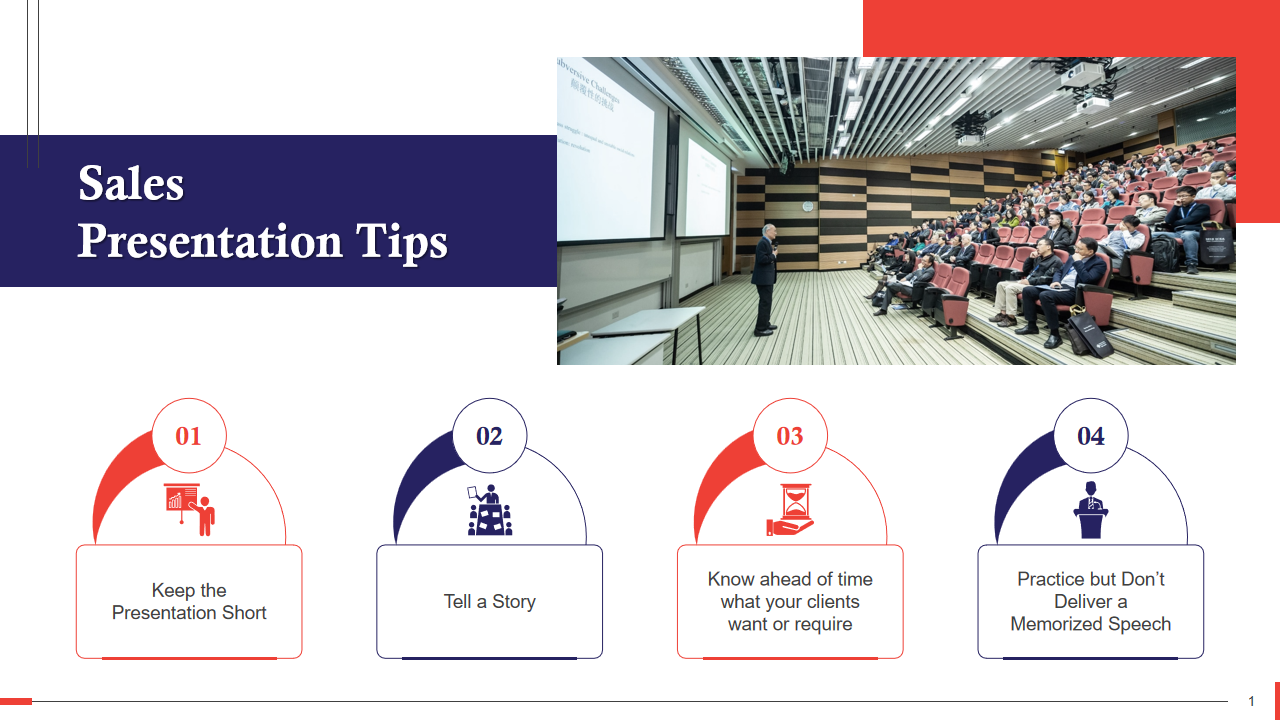
Template 5: Tips To Create Effective Sales Presentation Training PPT
Candidates can learn strategies for adequately structuring presentations, showcasing product features, and emphasizing consumer benefits to boost sales. The template emphasizes the value of concise, clear, and clear messaging and helps hold the audience's attention. Candidates can produce presentations that are simple to understand and have an impact on the audience by following these guidelines.
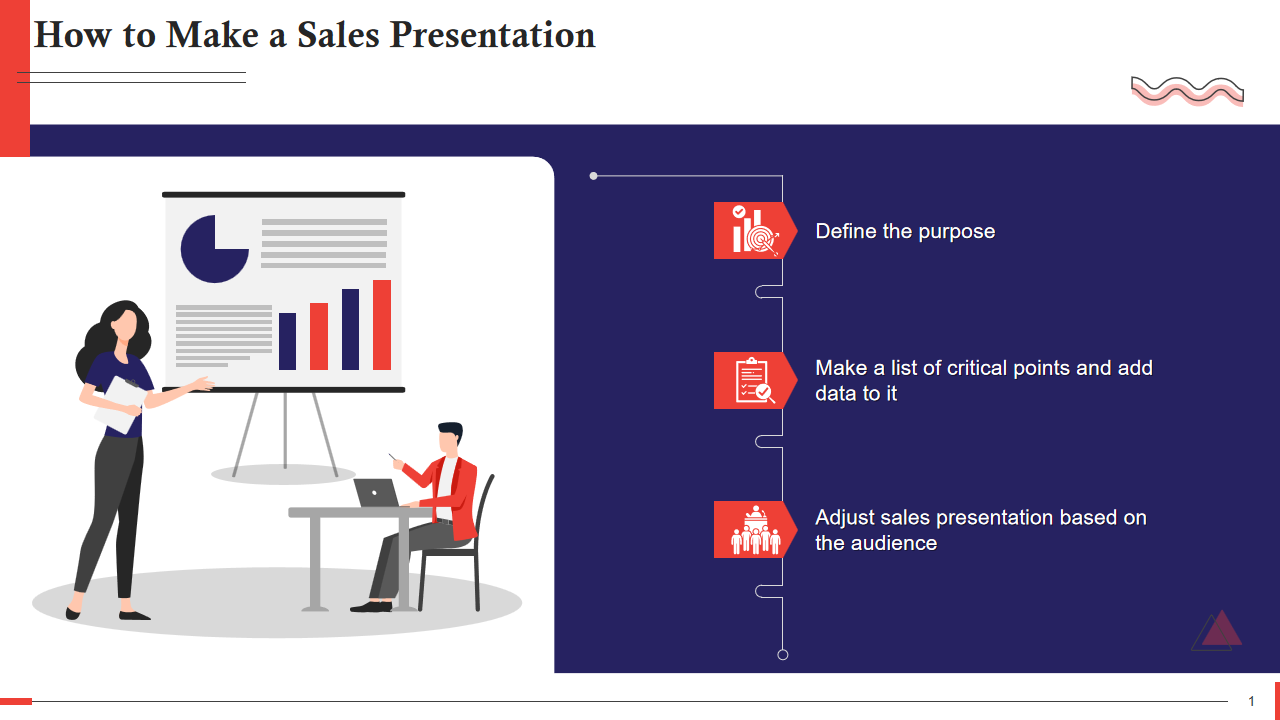
(Explore our Sales Objections and Response Templates as these are your toolkit for addressing concerns, building trust, and driving successful conversions through effective objection handling.)
Template 6: Avoid Delivering Memorized Speech as a Sales Presentation Tip
Information on balancing preparation and spontaneity so that the presentation seems natural and exciting rather than overly planned. This sample offers suggestions for flexibility throughout the presentation to handle any unexpected inquiries or audience responses. Candidates can develop a connection with the audience and create a sincere connection by adopting spontaneity and genuineness.
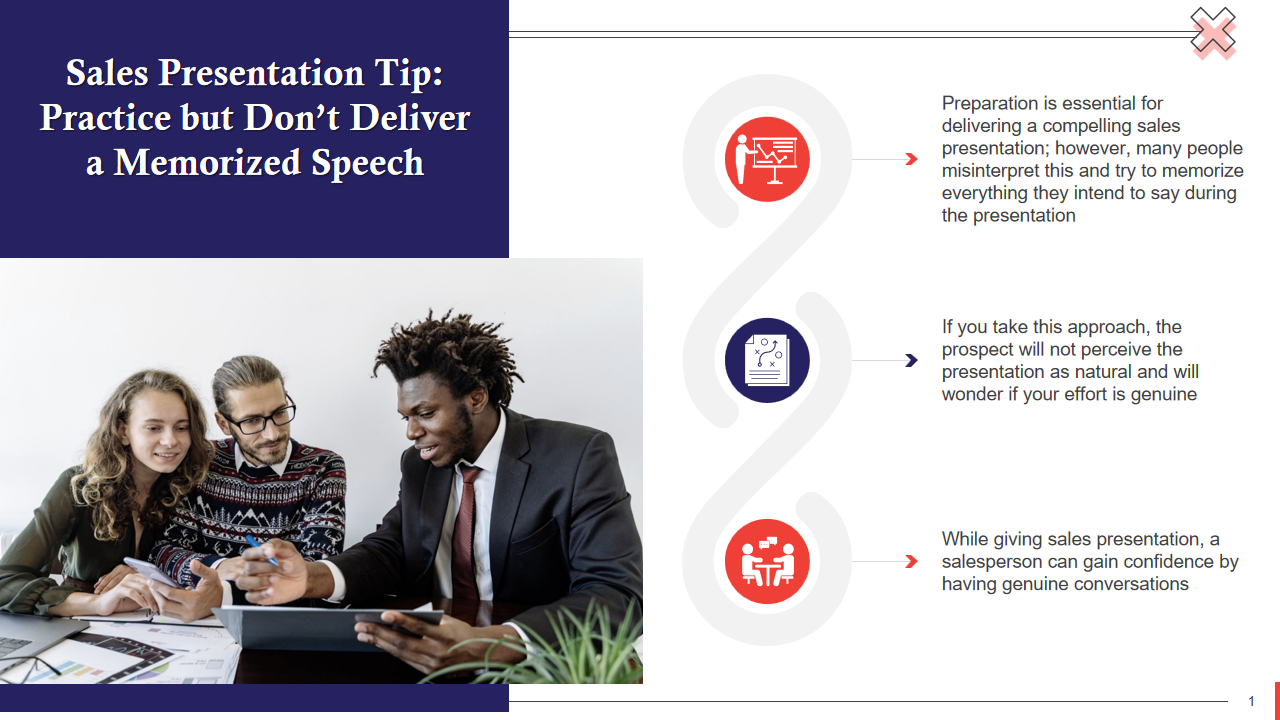
Template 7: Tell A Story as a Sales Presentation Tip
This template emphasizes storytelling's ability to engage an emotional audience, strengthening the presentation's relatability and staying power. The positive effects of the product or service on customers can are analyzed using success stories, case studies, or personal anecdotes, which candidates encourage. Candidates can elicit feelings and motivate action from the audience by integrating storytelling elements.
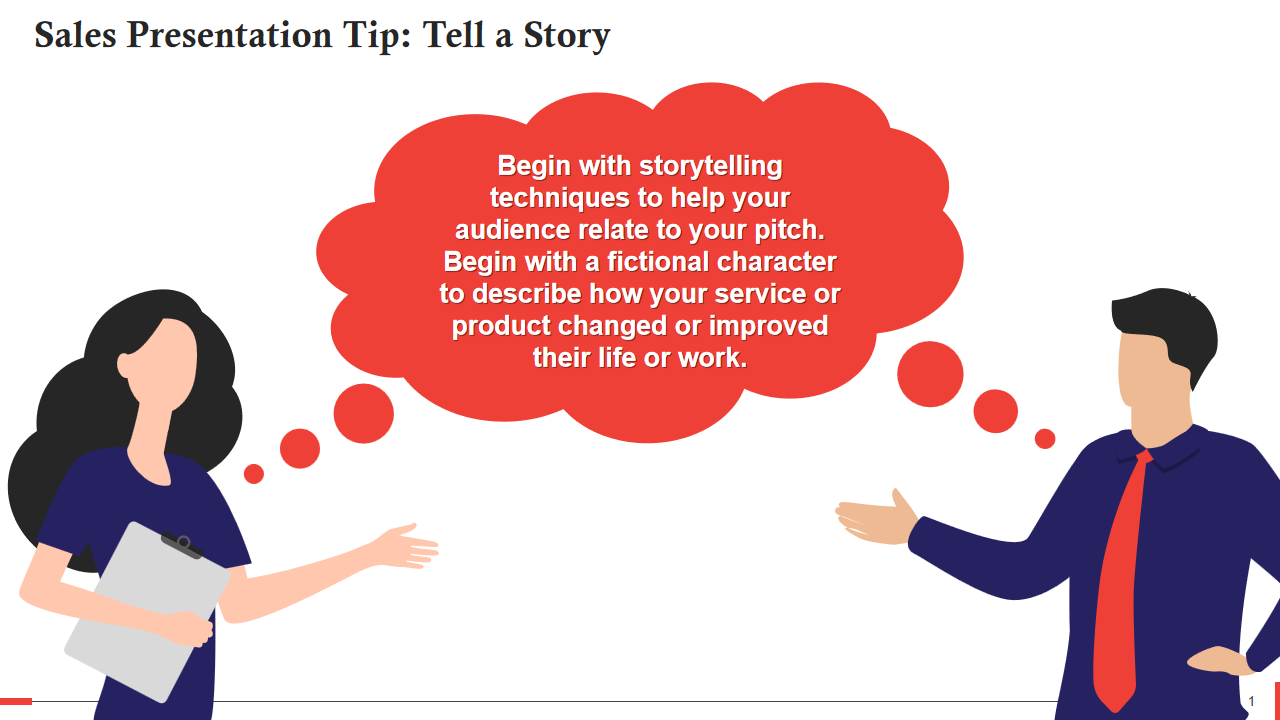
Sales presentation interviews are essential to find top-tier salespeople who can propel company growth and cultivate long-lasting customer relationships. Candidates may improve their pitch, stand out from the competition, and raise their chances of getting their ideal sales job by using these best sales presentation interview templates and understanding the techniques offered. It's essential to remember that a candidate can stand out and succeed in a sales presentation interview by being prepared, flexible, and able to connect with the audience.
FAQs on Sales Presentation
1. what is the sales presentation.
A sales associate may present a good, service, or idea to prospective customers during a sales presentation to convince them to buy something or do something else. Successfully closing agreements requires clearly articulating the value of the offering and attending to consumer concerns. A sales presentation seeks to persuade the consumer to choose the offering by highlighting the good or service's advantages and unique selling points.
2. What should a sales presentation include?
A sales presentation includes a solid call to action with a clear introduction, a practical product demonstration, and addressing the audience's needs. Data, statistics, and testimonies can all help to increase the presentation's impact. Keep the audience's interest throughout the presentation by presenting the information well-organized and excitingly.
3. What are the five steps of a sales presentation?
The five steps of a sales presentation are preparation, rapport-building, presenting the good or service, dealing with objections, and concluding with a compelling call to action. Building trust, communicating the worth of the gift, and convincing the audience to act depends on each phase. In planning, you must recognize the audience to customize the presentation. The salesman must project a cheerful, assured tone during the presentation while concentrating on meeting customer demands and highlighting the product's advantages.
4. How do you prepare for a sales presentation?
Researching the audience, comprehending their problems, practicing the pitch, and developing persuasive visual aids that reinforce the message are all things you should do to get ready for a sales presentation. Candidates should practice their delivery to increase confidence and prepare to address any unforeseen difficulties. Candidates can position themselves as informed and dependable sales experts by being intimately familiar with the product or service and skilled at responding to frequent objections. To continuously enhance and perfect the delivery, seeking feedback and iterating on the presentation is crucial. Adopting templates for sales presentation interviews is helpful because they offer structure and direction for creating an engaging and powerful presentation.
Related posts:
- Must-have Interview Format Samples with Templates and Examples
- Elon Musk’s Top 10 Most Influential Presentations
- Top 15 One-Page Product Review, Tracking and Sales Sheet Templates For Easy Follow-Up
- Top 15 Elevator Pitch Templates to Present Extraordinary Business Ideas
Liked this blog? Please recommend us

Must-have Product Page Templates with Examples and Samples
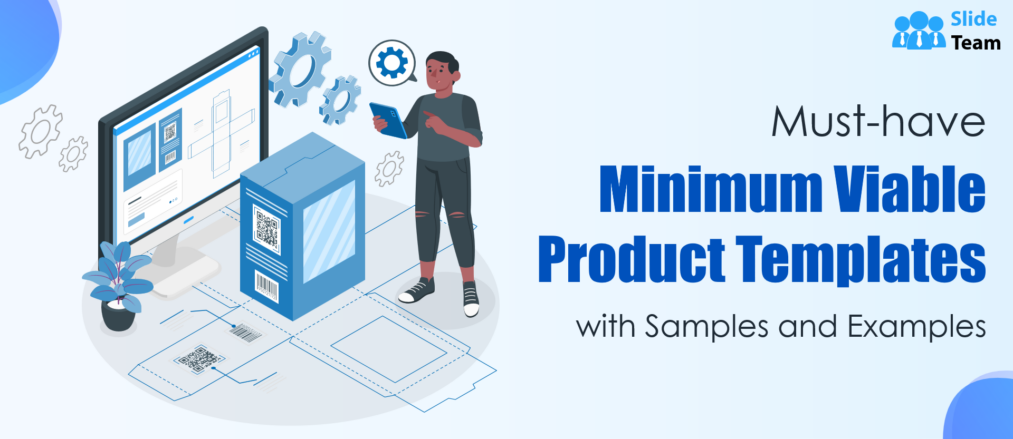
Must-have Minimum Viable Product Templates with Samples and Examples
This form is protected by reCAPTCHA - the Google Privacy Policy and Terms of Service apply.

Digital revolution powerpoint presentation slides

Sales funnel results presentation layouts
3d men joinning circular jigsaw puzzles ppt graphics icons

Business Strategic Planning Template For Organizations Powerpoint Presentation Slides

Future plan powerpoint template slide

Project Management Team Powerpoint Presentation Slides

Brand marketing powerpoint presentation slides

Launching a new service powerpoint presentation with slides go to market

Agenda powerpoint slide show

Four key metrics donut chart with percentage

Engineering and technology ppt inspiration example introduction continuous process improvement

Meet our team representing in circular format


Free Job Interview PowerPoint Template
Job interview presentation template design with 11 slides.
This free Job Interview PowerPoint presentation template is a complete slide deck presentation design ideal to be used by Human Resource specialists, job interviewers, and job candidates to prepare presentations for an effective job interview.
In this free interview presentation template for preparing job interviews, you can find slides to present the following topics:
- A job description
- Why do you want this job
- Your career vision in 5 years from now
- Candidate’s background and previous companies
- What the candidate know about the company
- A clear proposal for the job
- Information on the compensation and salary
- Career Future in the company
The free template for job interview includes not only awesome backgrounds but also good graphics, shapes and editable diagrams to prepare effective job interview presentations .
This template can be used by hiring firms or job candidates, to support the interview presentation. It can be used for a variety of job interview purposes and roles, for example some HR professionals choose to use it to guide a web developer interview PowerPoint presentation, but it can be customized for other purposes.
By using this professional job interview presentation template, the job interviewer or job candidate can prepare for a successful job interview. If you finally achieve a great presentation using this template, we’d appreciate you contact us to tell your story or help to share this job interview template with others. Alternatively, you can download other free interview presentation templates.
Possible applications of Free Job Interview PowerPoint Template
- Human Resource Specialists: They can use this interview presentation template to present job descriptions, clarify expectations, discuss salary information, and outline career prospects in the company. It can also be used to guide the interview process, ensuring that all key topics are covered.
- Job Interviewers: Hiring managers can use this interview PPT template to ensure they have a structured format for conducting interviews. It can help them explain what the company is looking for, give insight into the company’s background, and facilitate a more interactive and informative interview session.
- Job Candidates: Candidates can use this job interview template for PowerPoint and Google Slides to prepare for job interviews by presenting their background, career vision, knowledge about the company, and a clear proposal for the job. It can also help them articulate their reasons for wanting the job and can be used to negotiate compensation.
- Career Counselors/Coaches: This interview PPT template can be a resource for career coaches to help their clients prepare for job interviews. Coaches can walk clients through each slide, helping them understand what information to present and how best to present it.
- Educational Purposes: This interview PPT template could be used in a classroom setting for career preparation courses. Students could use it as a guide for preparing mock job interviews or for practicing their presentation skills.
- Workshops/Seminars: In a workshop or seminar setting, the interview slide template can be used to explain the process of job interviews, illustrating what to expect and how to prepare effectively.
- Recruitment Firms: Such agencies can use the job interview PPT template to prepare their candidates for job interviews, giving them a clear understanding of what is expected and helping them present themselves effectively.
- Online Interviews: In situations where interviews are conducted remotely, this free interview presentation template can ensure a smooth and structured online interview process.
- Various Job Roles: The free job interview presentation template can be customized for various job roles. For instance, it can be tailored to conduct a web developer interview PowerPoint presentation, as mentioned in the description, or it could be adjusted for any other roles in different industries.
- Job Fairs: Companies participating in job fairs can use this job interview template to present their company, the roles they are hiring for, and the benefits they offer to prospective candidates.
- Company Onboarding Programs: Companies can use the job interview PowerPoint template as part of their onboarding program to introduce the company, the job role, and career prospects to new hires.
Slides Preview
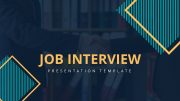
Job Interview
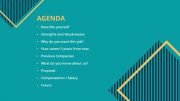
Agenda Slide for Job Interview

Describe Profile Slide

Strengths and Weaknesses

Presentation Template: Free Job Interview PowerPoint Template

Register for free to download
Download In Progress…
Download will begin shortly. If you liked our content, please support our site helping us to spread the word. This way we can continue creating much more FREE templates for you.
For serious presenters, we recommend...
Slidemodel.com.
Fast-growing catalog of PowerPoint Templates, Shapes & Diagrams for Presentations.
Presenter Media
Animated PowerPoint Templates, 3D templates and Cliparts for PowerPoint
FREE registration required to download
- Download featured templates, for FREE!
- Transfers at maximum speed.
- We respect your privacy
We will send you our curated collections to your email weekly. No spam, promise!
- Online Degree Explore Bachelor’s & Master’s degrees
- MasterTrack™ Earn credit towards a Master’s degree
- University Certificates Advance your career with graduate-level learning
- Top Courses
- Join for Free
10 Common Interview Questions and How to Answer Them
Have a job interview coming up? Interview preparation is key. Before going, review the most common interview questions, plan your responses, and research the company so you can walk into that room prepared.
![presentation job interview example [Featured image] A man sits in a hallway preparing responses for common interview questions.](https://d3njjcbhbojbot.cloudfront.net/api/utilities/v1/imageproxy/https://images.ctfassets.net/wp1lcwdav1p1/432YwoMpTjCEPMN4jKPQtq/f152bf725f6bb3a355480c39d9d9784b/GettyImages-152415056.jpg?w=1500&h=680&q=60&fit=fill&f=faces&fm=jpg&fl=progressive&auto=format%2Ccompress&dpr=1&w=1000)
When you land an interview, you’re probably excited and wondering about the most common interview questions. To prepare for your interview and make a great first impression, you can explore this list of 10 common interview questions and plan your responses to them.
1. Tell me about yourself.
This warm-up question is your chance to make an impactful first impression. Be prepared to describe yourself in a few sentences. You can mention:
Your past experiences and how they relate to the current job
How your most recent job is tied to this new opportunity
Two of your strengths
One personal attribute, like a hobby or an interest
The majority of this response leans on your past work experience, with a small dash of your personal life added at the end of the response. Keep your answer to two to four minutes.
2. Why do you want to work for this company?
The answer to this interview question should include specifics about the company, so you’ll need to do some pre-interview research. If, for example, the company is known for its collaborative culture, you could point out successes you’ve had while collaborating with a team.
Look for company-specific information on their website and social channels. Pay attention to the company’s mission statement, values, and the "About us" section. Explore employee-specific posts on social media to learn about the company’s culture or outreach programs. Combine this information with relatable skills to show your preparedness and enthusiasm for the company.
3. Why are you leaving your current role?
When asked about leaving a previous job, be honest but positive. Even if you left a job under trying circumstances, keep your response short and upbeat. Here are some suggestions:
I’m looking for a company that better aligns with my values.
I’m excited to find a company where I can grow my career.
I’ve decided to go down a different career path.
My position was downsized, but I’m looking forward to a new opportunity.
I’m excited to explore a culture in line with my personality.
I’m ready to take on a new challenge with an innovative company.
I’ve aspired to work for this company and seized the chance to apply.
4. What is your biggest weakness?
When it comes to identifying weaknesses, think about some conflicts you’ve had to overcome. Maybe it’s difficult for you to take criticism, collaborate, or make public presentations. Take these challenges and frame them with a solution. For instance, you learned to take feedback to better a project, collaborate to elevate a product’s offerings, or use presentations as a way to build your confidence.
5. What do you consider your greatest achievement?
Your greatest achievement should be something specific, like bringing a new video game to a saturated market despite a lack of resources. Discuss a work-related triumph as a way to humbly mention your achievements rather than listing awards or accolades. This achievement should also align with the company’s mission, goals, or the position’s objectives.
6. Tell me about a difficult situation you’ve faced and how you handled it.
This question is really asking about your character during moments of stress. Think of a time when you faced an impossible deadline, had to choose sides, or navigated interoffice turmoil. Explain the problem, how you stayed calm, and focus on the solution that produced a resolution.
7. Give an example of how you’ve gone above and beyond your role requirements.
While you might be tempted to mention the extra hours you put in or the additional tasks you take on, it’s best to showcase your skills with a story. Talk about the innovative methods you deployed to revive a stalled project or roles you filled when your team was downsized.
8. What are your salary expectations?
Salary talks can be sensitive, but they’re necessary. Research a competitive salary before you go into your interview so you don’t aim too high or low. You can use tools like a Salary Calculator or Salary Data & Career Research Center (Canada) to get baseline compensation. Remember to mention years of experience or specific certifications that enhance your value.
9. Where do you see yourself five years from now?
Another common interview question looks at your five-year plan. You should promote your commitment to the company while looking toward growth opportunities.
More specifically, you can craft a response that explores your:
Position-related goals
Potential experiences within the company over the next five years
Possible certifications, skills, or achievements you might obtain
Aspirations for growth within the role
10. Do you have any questions for us?
Typically, this is the last question of the interview, and it might be tempting to say, “No. I’m all set.” However, this question allows you to show your interest in the position. Some questions you could ask include:
What are the day-to-day tasks involved in this role?
How do you evaluate the progress of this role?
What ongoing educational or training opportunities could I pursue in this role?
Where do you see the company in five years?
How would you describe the company culture?
How to prepare for an interview
Before your interview, you should do a few things in preparation. To make a great first impression, you should research the company, practice your responses to common interview questions, and run through a practice interview. For more specific tips, take a look at this pre-interview checklist:
1. Research the company.
Start your research on the company website. Look over their mission statement, values, and history. Next, check Google News for any articles that include the company. Comb through the company’s social accounts, paying particular attention to the product- or employee-related posts. Also, read the LinkedIn profiles of the company’s key players and, if possible, the profile of your hiring manager.
2. Understand company work culture.
Take some time to learn about the company culture by looking at employee photos on social media and checking out the company's news coverage. You might see team-building events on its Facebook Page or news coverage of a recent fundraiser, which can help you understand the culture. You can also check for employee testimonials on business rating platforms like Glassdoor.
3. Prepare your answers.
Take some time to review the most common interview questions and practice your answers. You don’t want to sound rehearsed, so write down a few bullet points for each question and talk through them a little differently each time.
4. Practice the interview.
Ask a friend or family member to role-play with you. Go through the standard interview questions, and practice your greeting and exit. Wear the outfit and shoes you plan to wear during the practice to ensure you’re comfortable.
5. Ask for feedback.
Ask your mock interviewer to give you feedback. Maybe you slouched in the chair, nervously bounced your knees, or got stuck on a particular interview question. The person helping you can give you some tips to improve your interview skills.
Next steps
In addition to role-playing, you might consider taking an online class or two to improve your interview skills. Prepare for a successful job search with the Interviewing and Resume Writing in English Specialization from the University of Maryland. Learn at your own pace and practice your interviewing skills with other job seekers from around the globe.
Keep reading
Coursera staff.
Editorial Team
Coursera’s editorial team is comprised of highly experienced professional editors, writers, and fact...
This content has been made available for informational purposes only. Learners are advised to conduct additional research to ensure that courses and other credentials pursued meet their personal, professional, and financial goals.

COMMENTS
Deliver your presentation to family or friends in advance of the interview to learn more about what you might be saying nonverbally. 9. Use clear diction and adequate volume. A benefit of standing is that it makes it easier to breathe deeply and speak with adequate volume, so you are easily understood.
Template 4: Hobbies PPT Template. This PPT Template features five distinct hobby options, allowing you to showcase your authentic self. Each hobby is accompanied by a percentage, providing a clear indication of your dedication and commitment. This PPT Slide is a standout choice for 10-minute interview presentations, as it effectively ...
A PowerPoint presentation for a job interview is a great way for you to sell yourself as a future employee and for your potential employers to learn more about you. In this article, we'll outline the benefits of interview presentations as well as best practices and tips for creating and presenting them. ... Presentation for Interview Example ...
Follow these steps: 1. Choose and research a topic. To prepare for your presentation, choose a topic that applies to the job you're interviewing for. It's good to understand the industry you want to work in, as well as the company you're interviewing with. Related: Research Skills: Definition, Examples and Importance. 2.
Bright and detailed job interview presentation is a great way to introduce yourself, demonstrate your skills, and show interest in the vacancy. ... For example, you start the presentation by identifying a company's problem, continue with the consequences they face without your expertise, and end with the clear solution you propose to overcome ...
Professional Job Interview Presentations to help land your dream job. View our job interview presentation templates today! ... When conducting your interview, make sure you have useful examples laid out in your interview presentation. For example, if you are interviewing at an e-commerce company, have a past example that relates somehow to the ...
For example, a Solutions Architect may have to give an interview presentation that shows their technical ability, but also highlighting communication and presentation skills. ... The 5 Things Your Job Interview Presentation Needs to Show. Before we get into the practical tips for your interview presentation, there are a few essential things ...
The Job interview presentation is a typical, but difficult part of the interview process. The presentation you have to give can differ massively to someone who is applying to a different role. For example, for a junior SEO or content writing position, you may have to do a written task beforehand, and then present on it.
A presentation should show off your verbal communication skills. That means you don't want to ramble or be poorly organized in how you share information. Limit filler words, such as "um," "like," and "you know.". Aim to make your presentation interesting and engaging. "Connect with interviewers on a human level.
A slick presentation takes quite a bit of effort, but it will be worth it if you land that job. 2. Do your homework on the company and the role. It sounds obvious, I know, but find out what the company you are interviewing for actually does. Yes, check their website and social media feeds, but every candidate worth their salt will also be doing ...
Job interview presentations have become a common step in the hiring process. Job candidates are asked to deliver a short speech or presentation on a given topic. ... Examples of her published work can be found at sites including the Huffington Post, Thrive Global, and Buzzfeed. Recommended Articles. Presentation Tips. The 7 Essential ...
Capture your audience's attention with an account that can only be delivered by you - making it unique and remarkable. Openly display your personality and values, enabling the employer to make a better informed selection decision - beneficial for everyone involved. 2. Use media. Starting your presentation can be the most difficult bit.
7. Practice presenting. Working on your presentation skills and delivery is very important. Avoid writing a script; just have simple notes that jog your memory. Try to keep a conversational tone as this will help you relax and create a more comfortable atmosphere in the room.
Keep It Concise and Relevant. Remember, you only have 10 minutes, so every second counts. Avoid going off on tangents or including excessive details. Stick to the most relevant information that directly supports your main message and the job requirements. Use the "so what?" test - ask yourself if each piece of information contributes to ...
Our creatively crafted slides come with apt research and planning. This exclusive deck with thirty four slides is here to help you to strategize, plan, analy...
11 Great topics for a job interview presentation. 1. Arts and Culture. Arts and culture involve many aspects of society, such as music, movies, performances, TV, literature, and so on. When presenting a topic about Arts and Culture, the audience will probably be familiarized with it. Again, research will be crucial here.
Ace your next job interview with these interview presentation templates. Whether you're a recent graduate or a seasoned professional, these templates will help you showcase your skills and experience in a visually appealing way. With a variety of customizable slides, you can easily manage your resume and highlight your achievements.
Link to Download Job Interview Presentation Template:https://www.slideteam.net/example-presentation-for-job-interview-powerpoint-presentation-slides.html?utm...
You can either use this Google Slides & PowerPoint template to make a lasting impression by doing a self-introduction, or you can use it to prepare something akin to a résumé! There are elegant geometric shapes and gradients, so the "grabbing attention" box can be ticked. Have a look at this design and, if necessary, make the most of the ...
Whatever you choose, try to mention things that give you a sense of pride and outline your core values. For example, if you're giving this presentation for a job interview, you might talk about some of your skills, your reasons for wanting the job, some of your relevant experience and why you think you're suitable for the role. When doing this ...
Template 1: Concept Of Sales Presentation Training PPT. With the help of this template, applicants get to know the principles of sales presentations, including the significance of understanding the audience, outlining specific goals, and using persuasion tactics.
In this video, I present an example of a job interview PowerPoint presentation tailored to the AML and Financial Crime prevention sector. While this presenta...
In this free interview presentation template for preparing job interviews, you can find slides to present the following topics: A job description. Why do you want this job. Your career vision in 5 years from now. Candidate's background and previous companies. What the candidate know about the company. A clear proposal for the job.
1. Tell me about yourself. This warm-up question is your chance to make an impactful first impression. Be prepared to describe yourself in a few sentences. You can mention: Your past experiences and how they relate to the current job. How your most recent job is tied to this new opportunity. Two of your strengths.